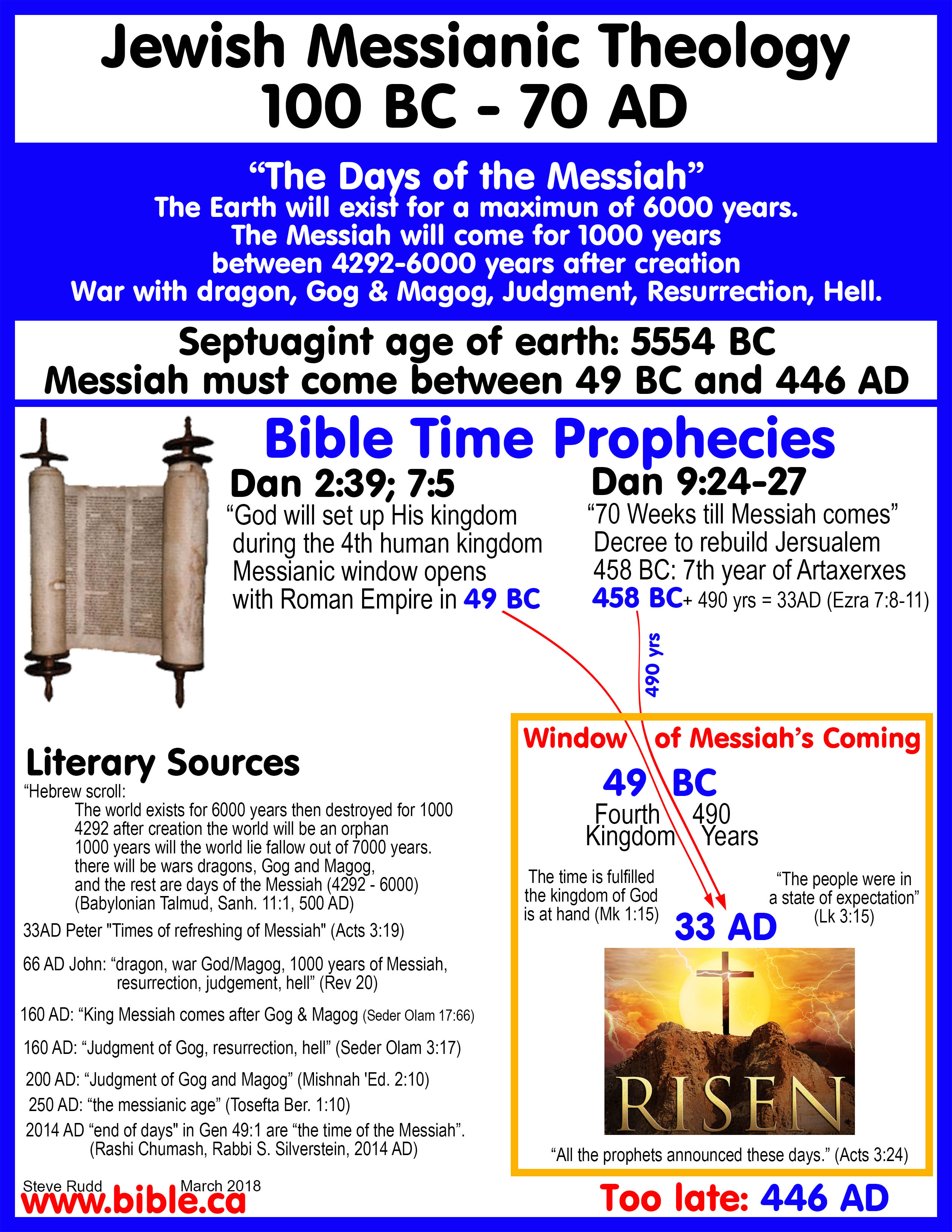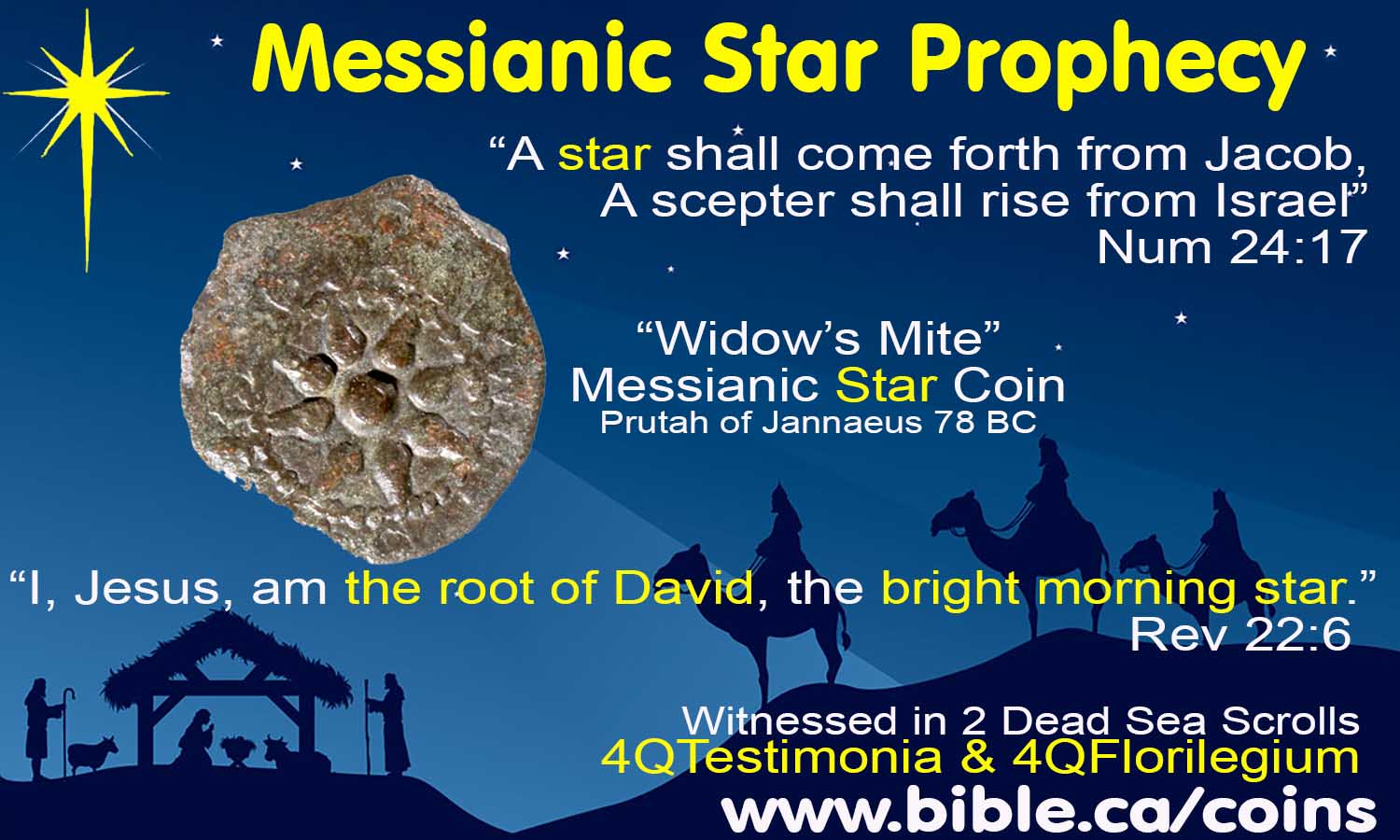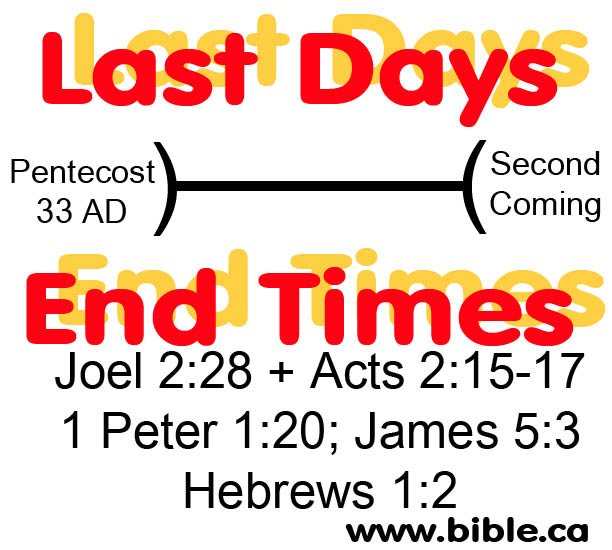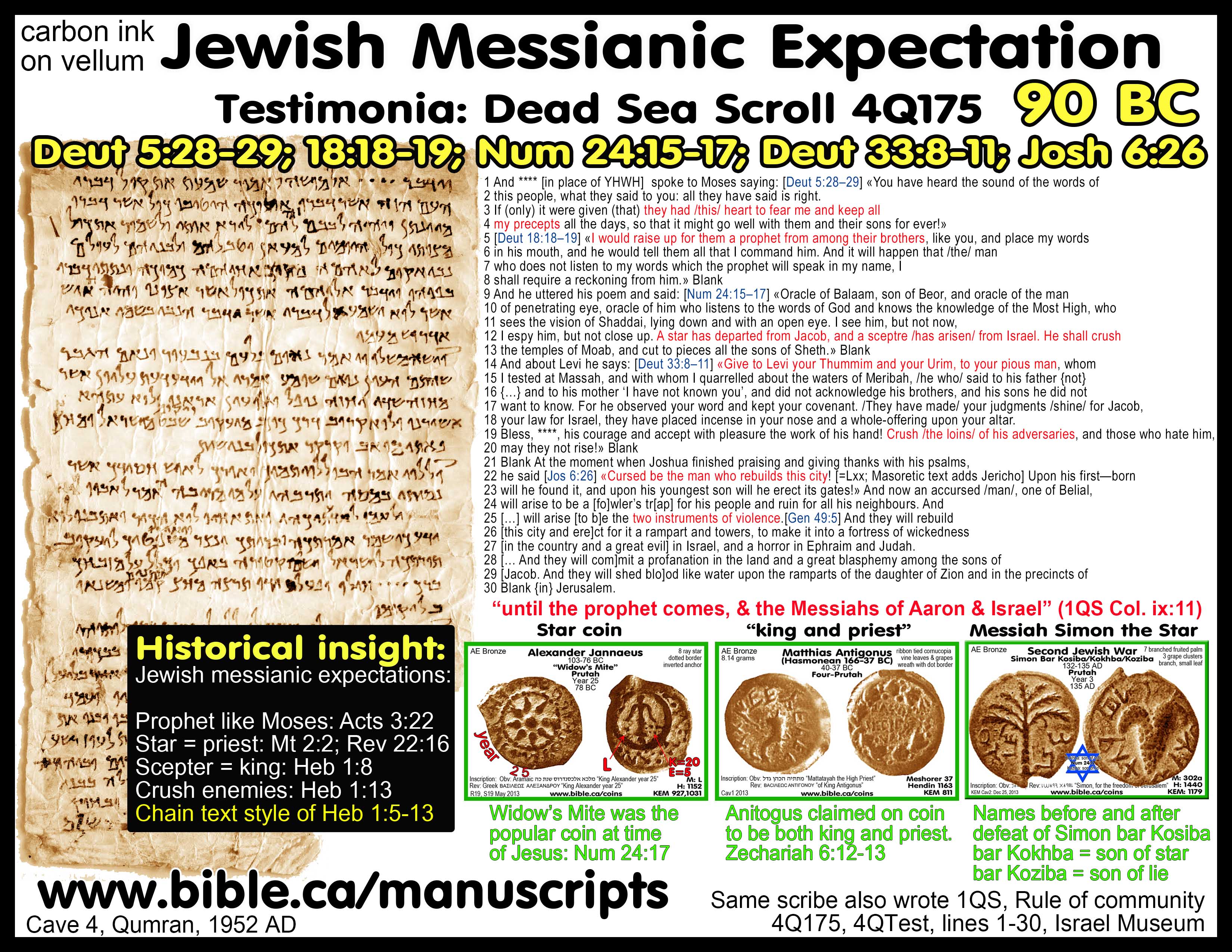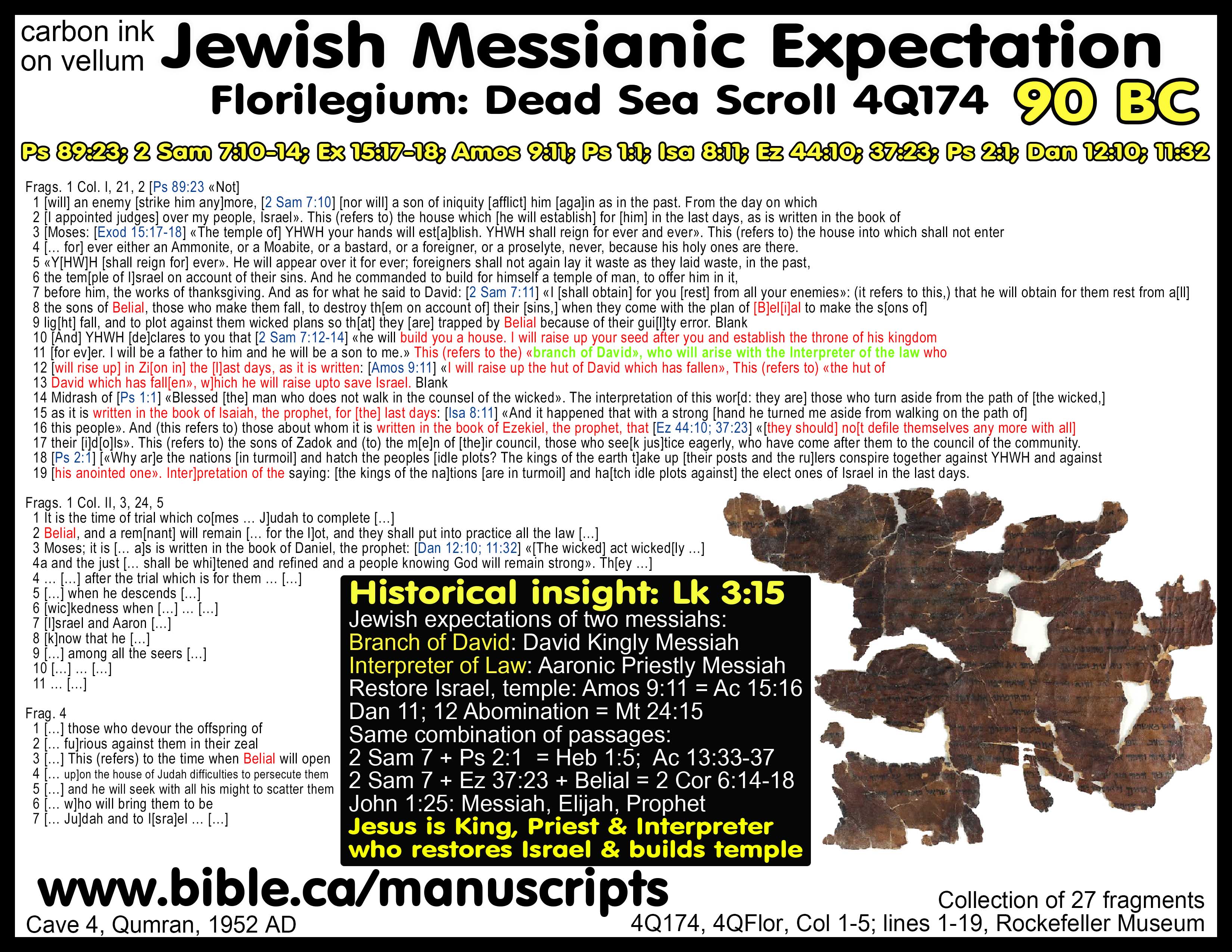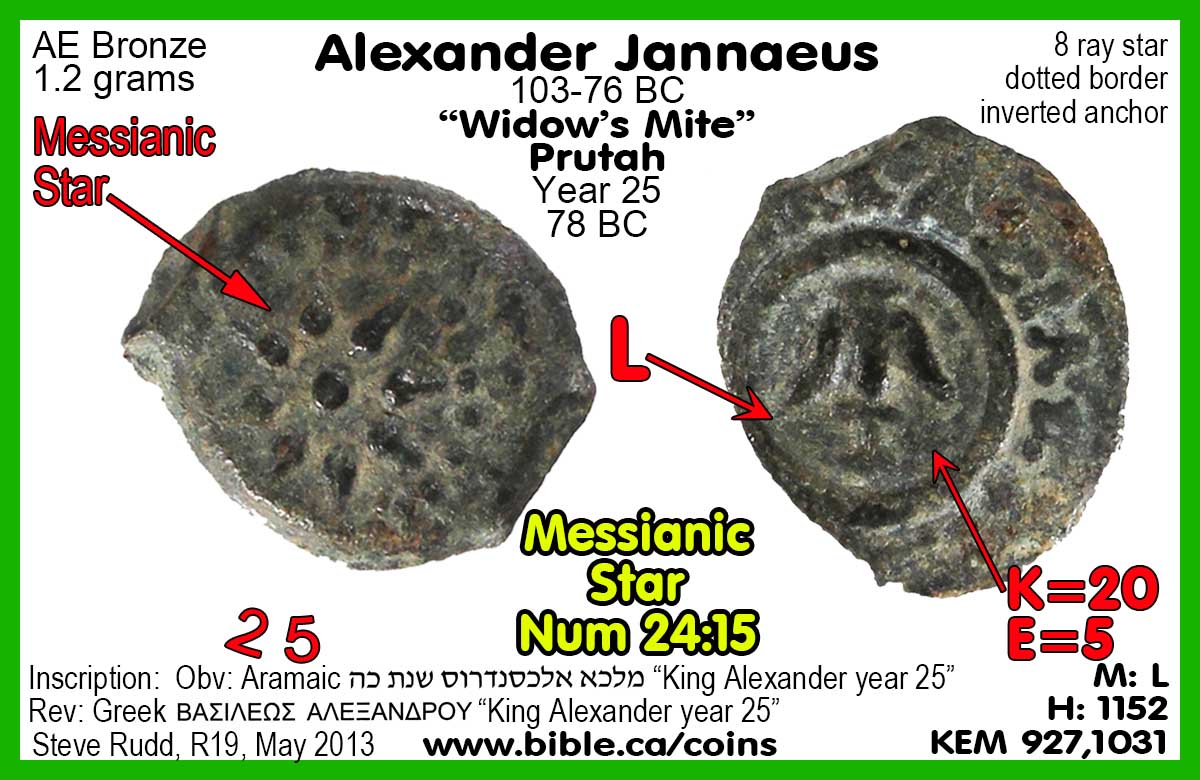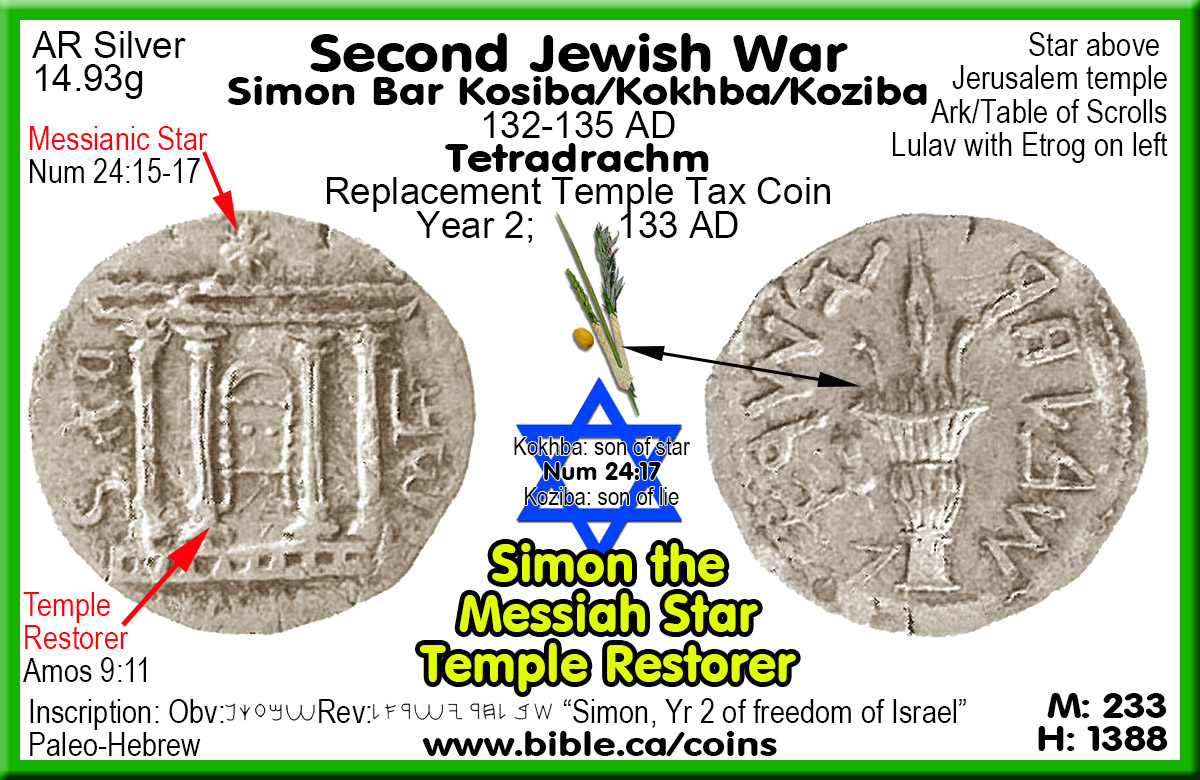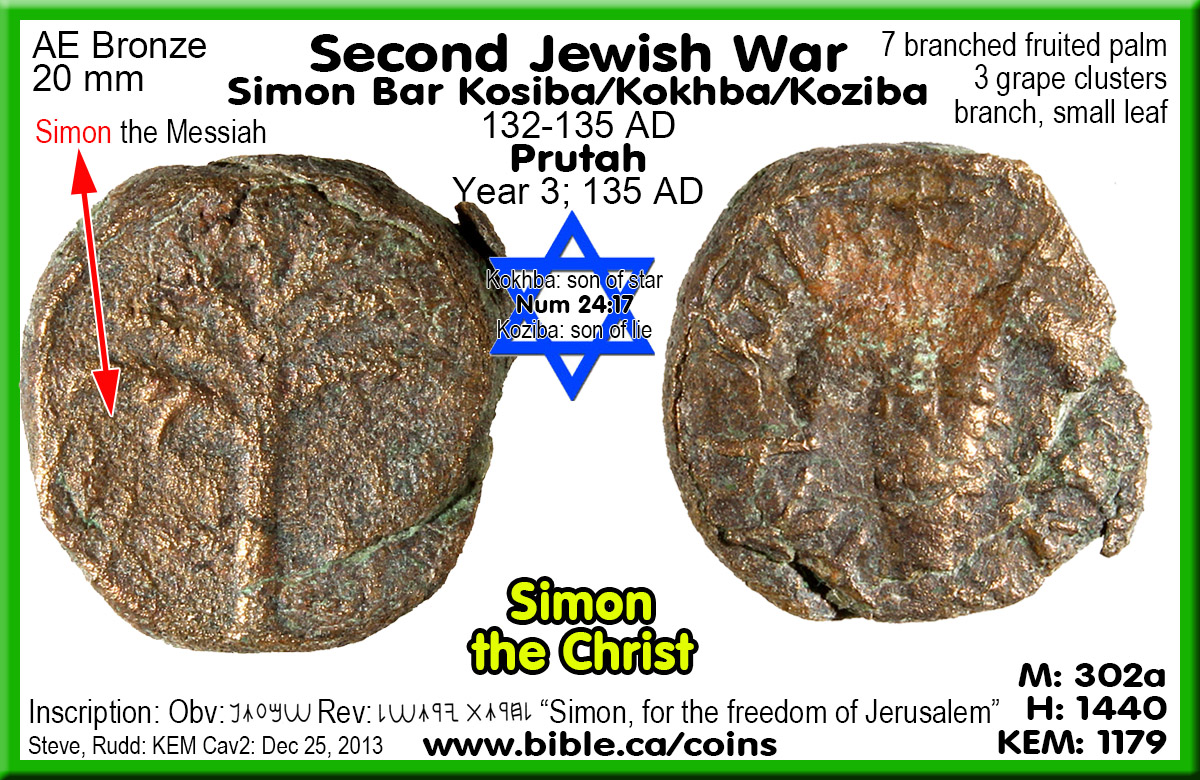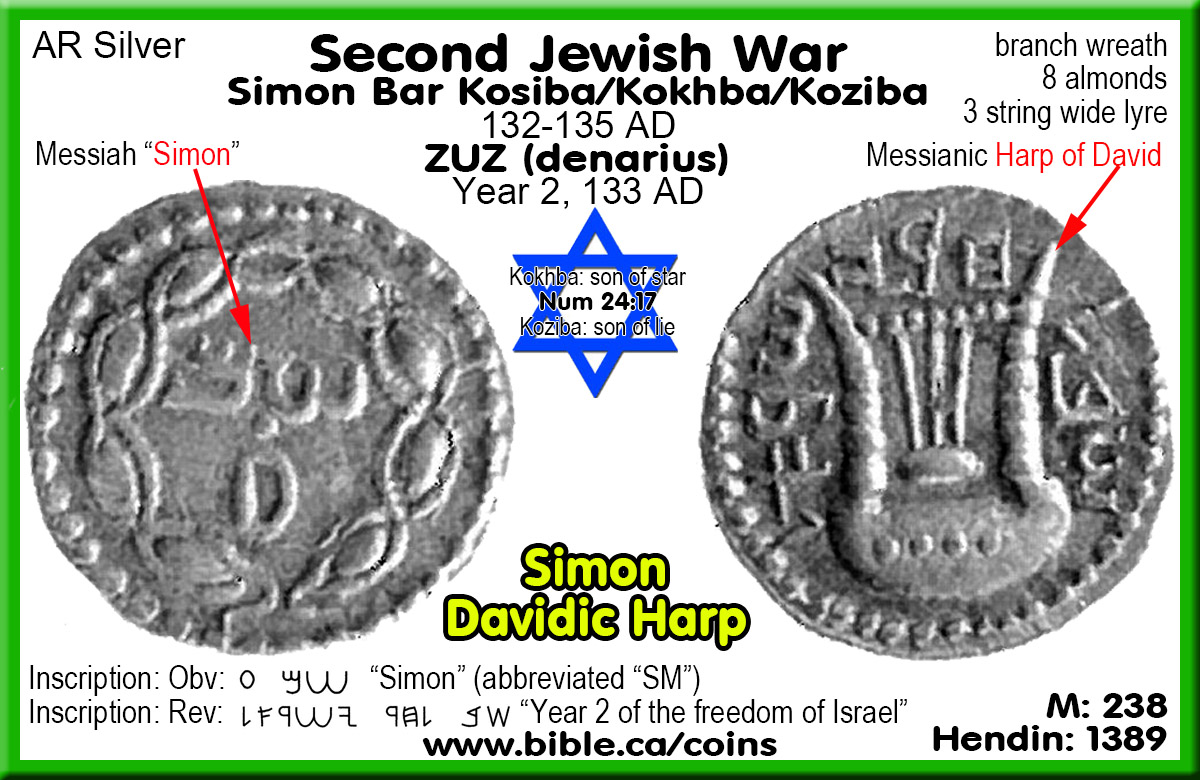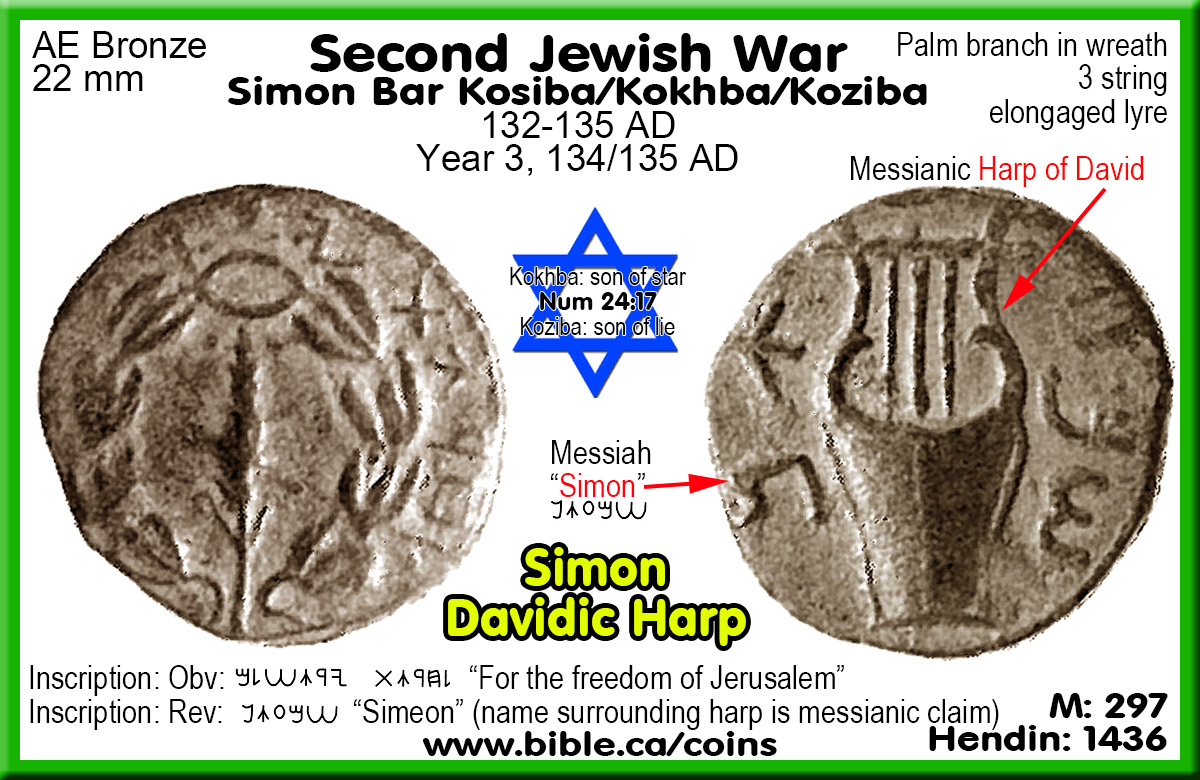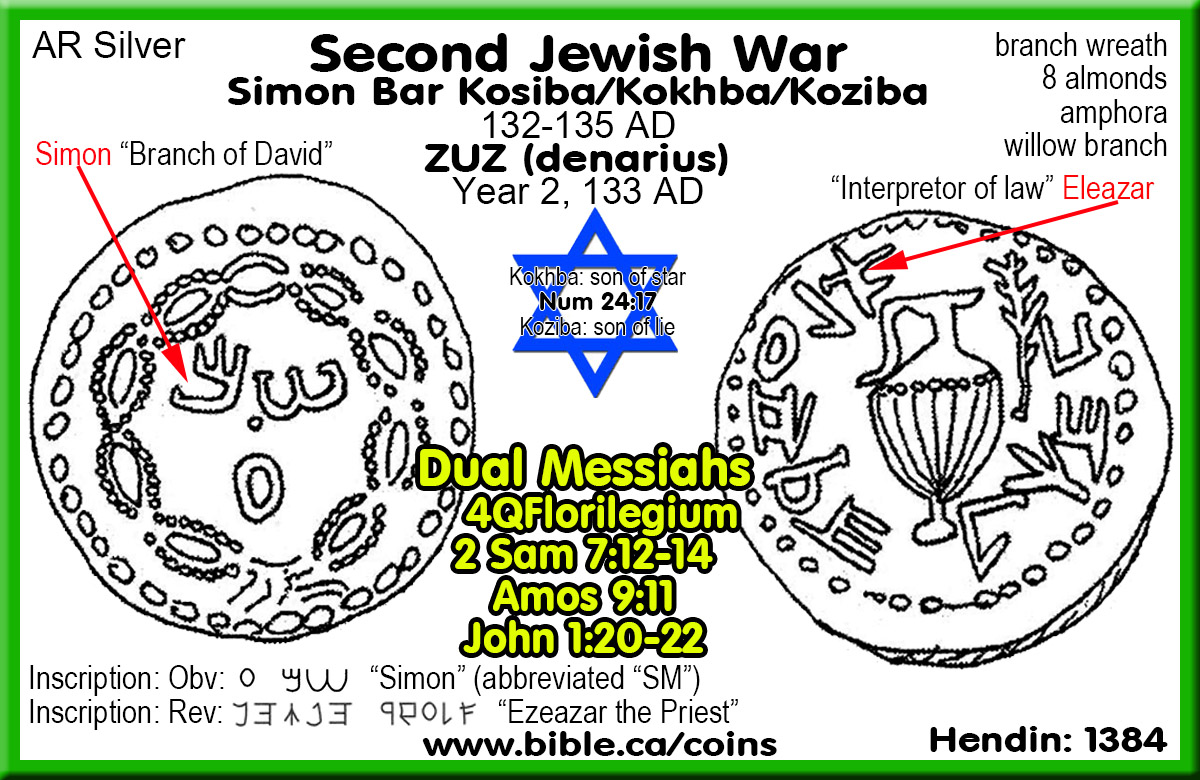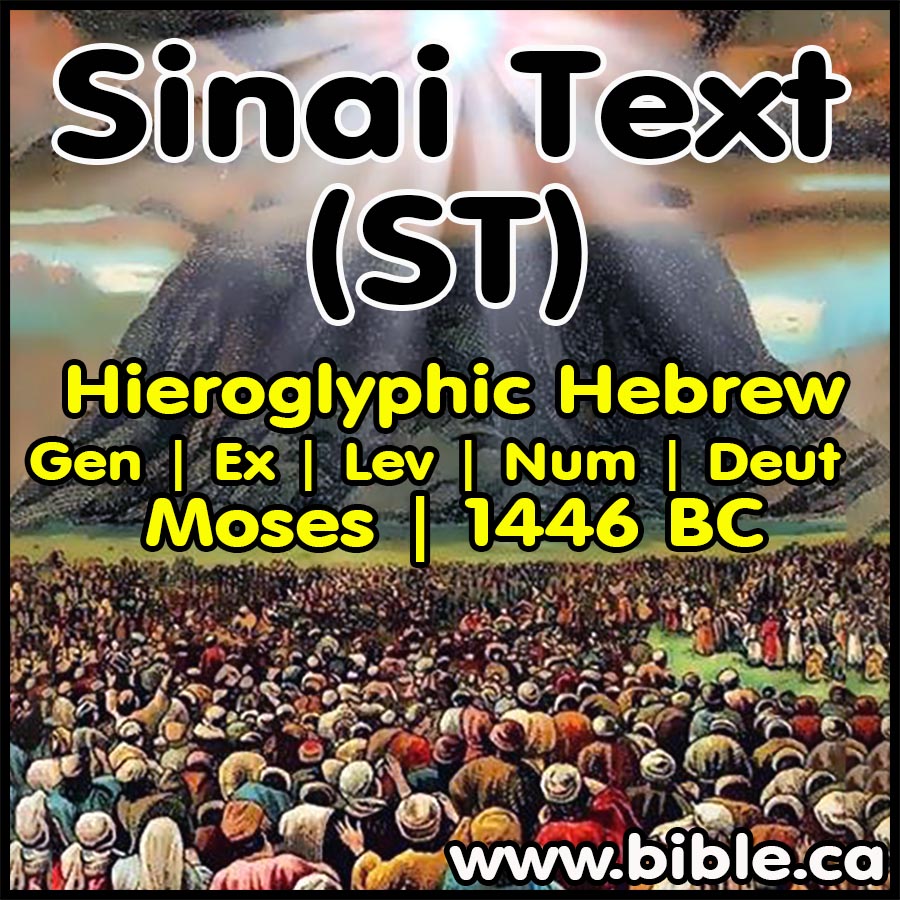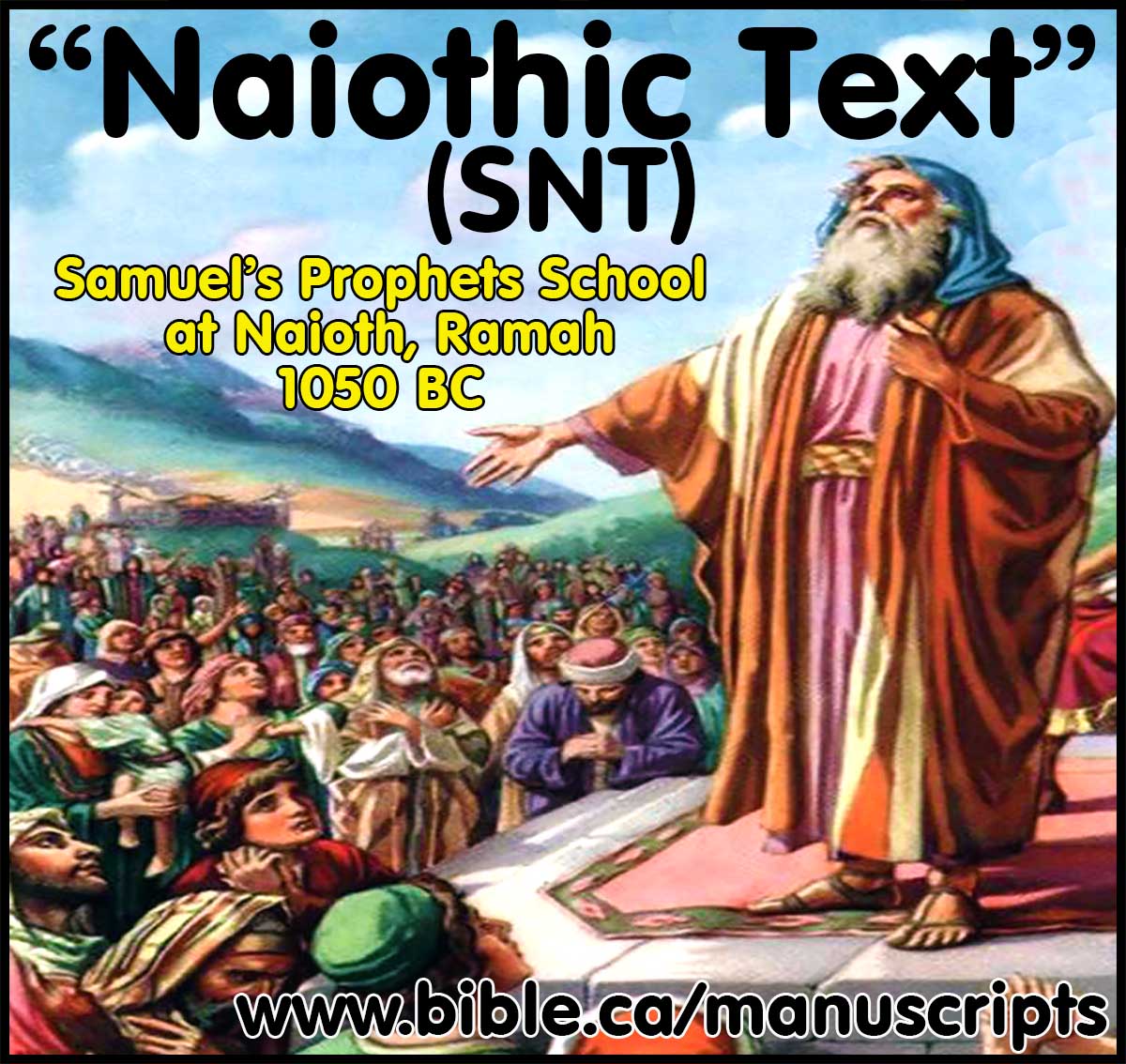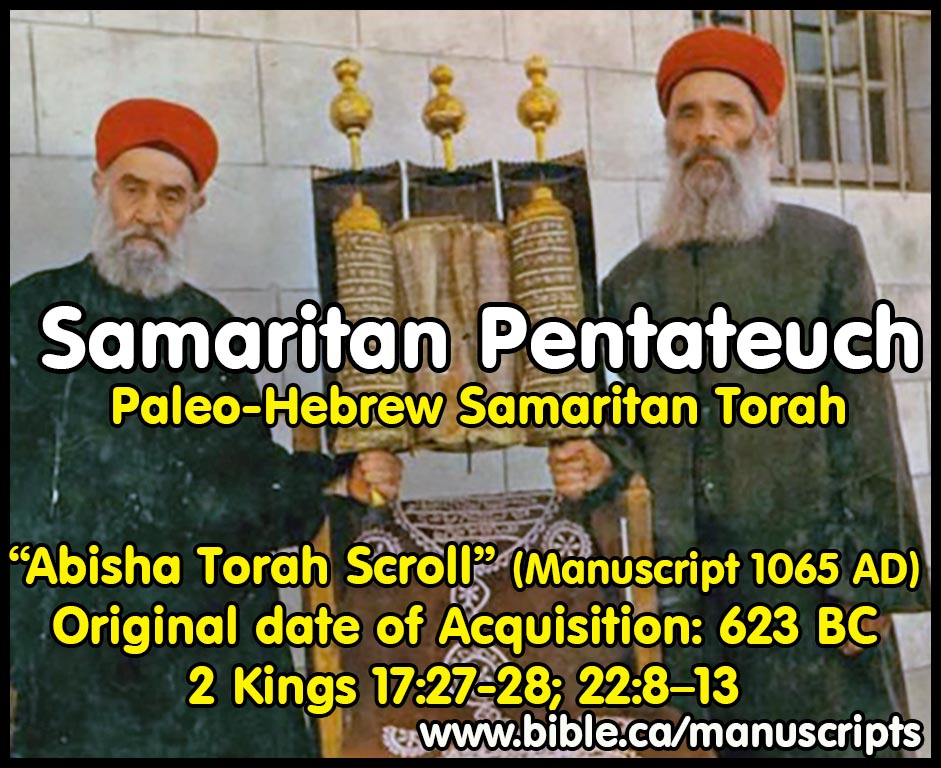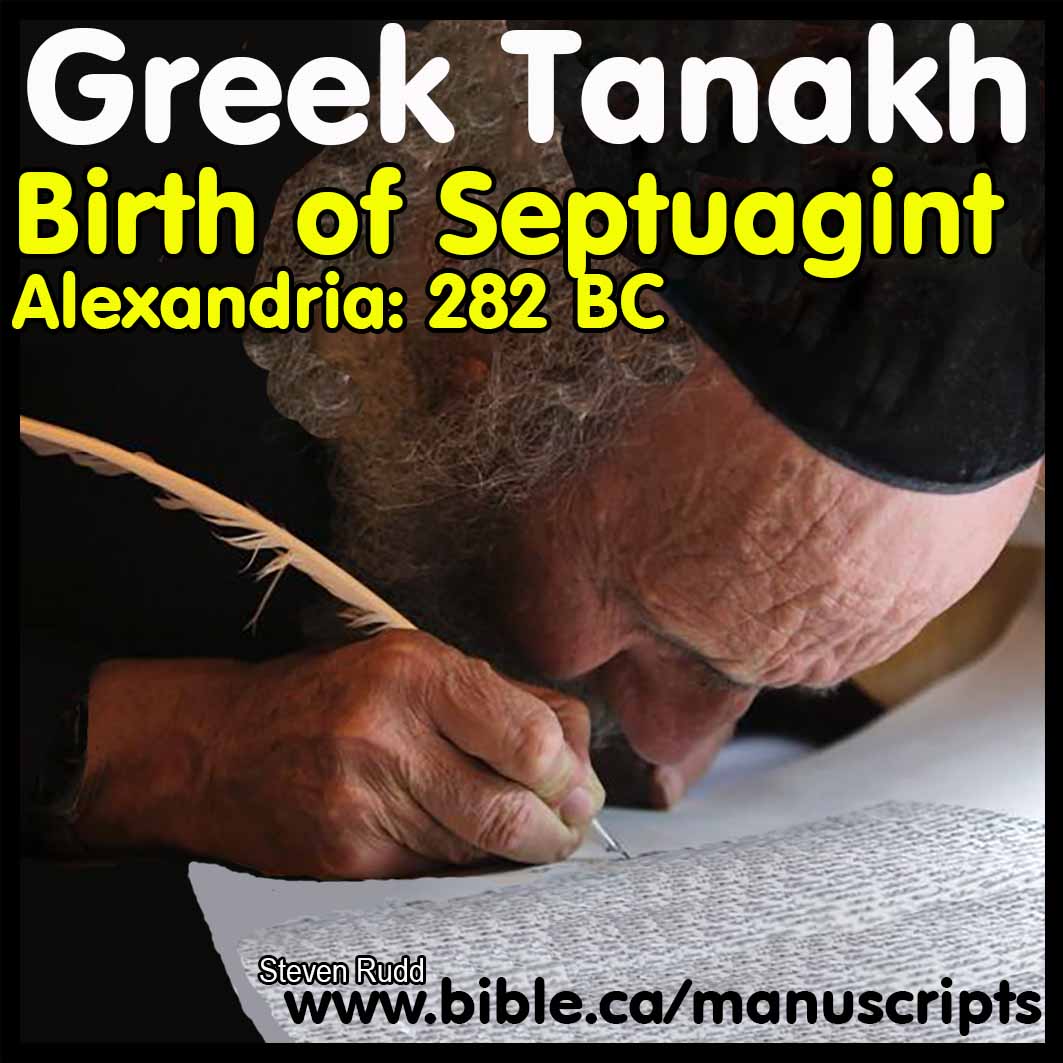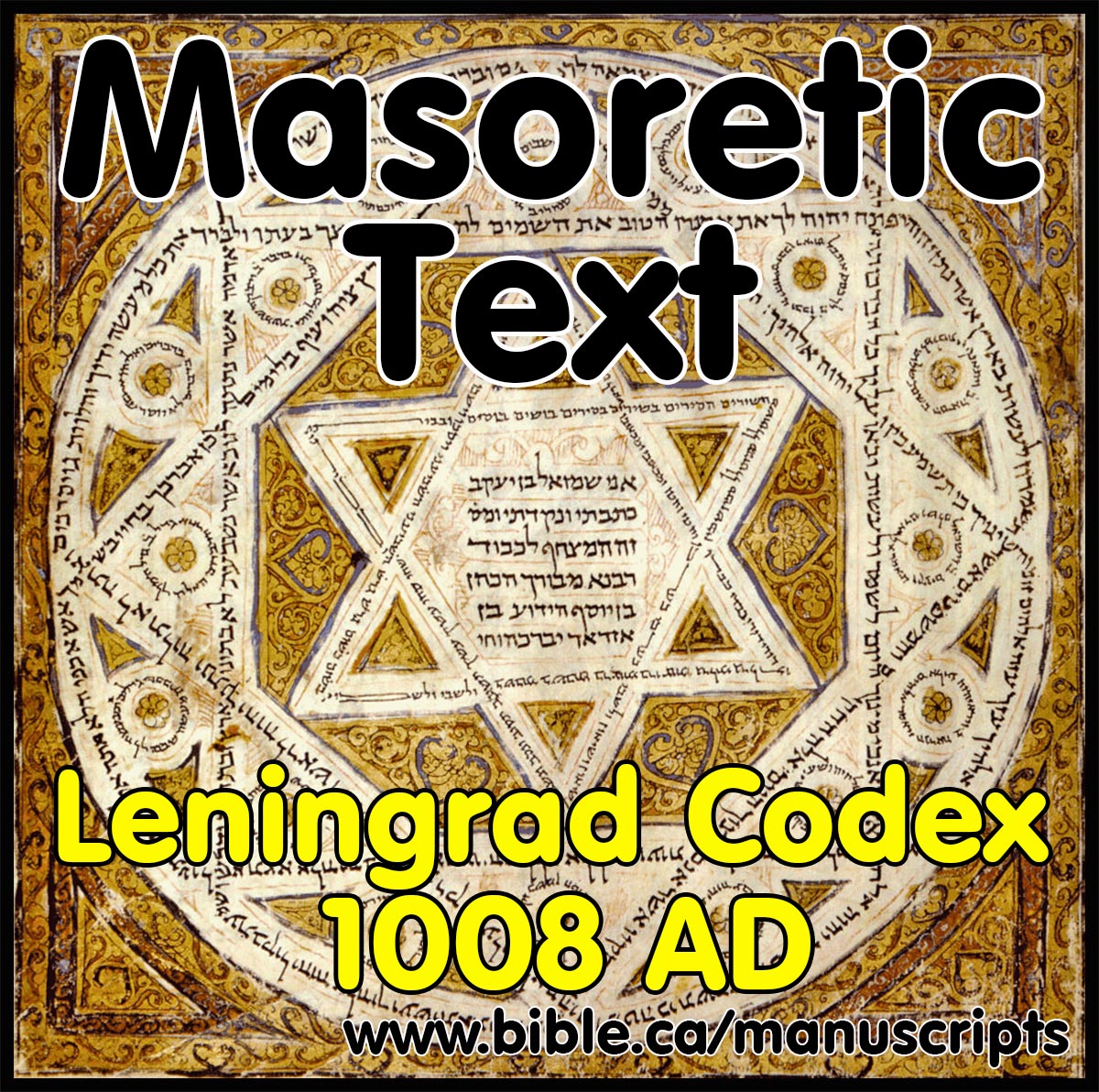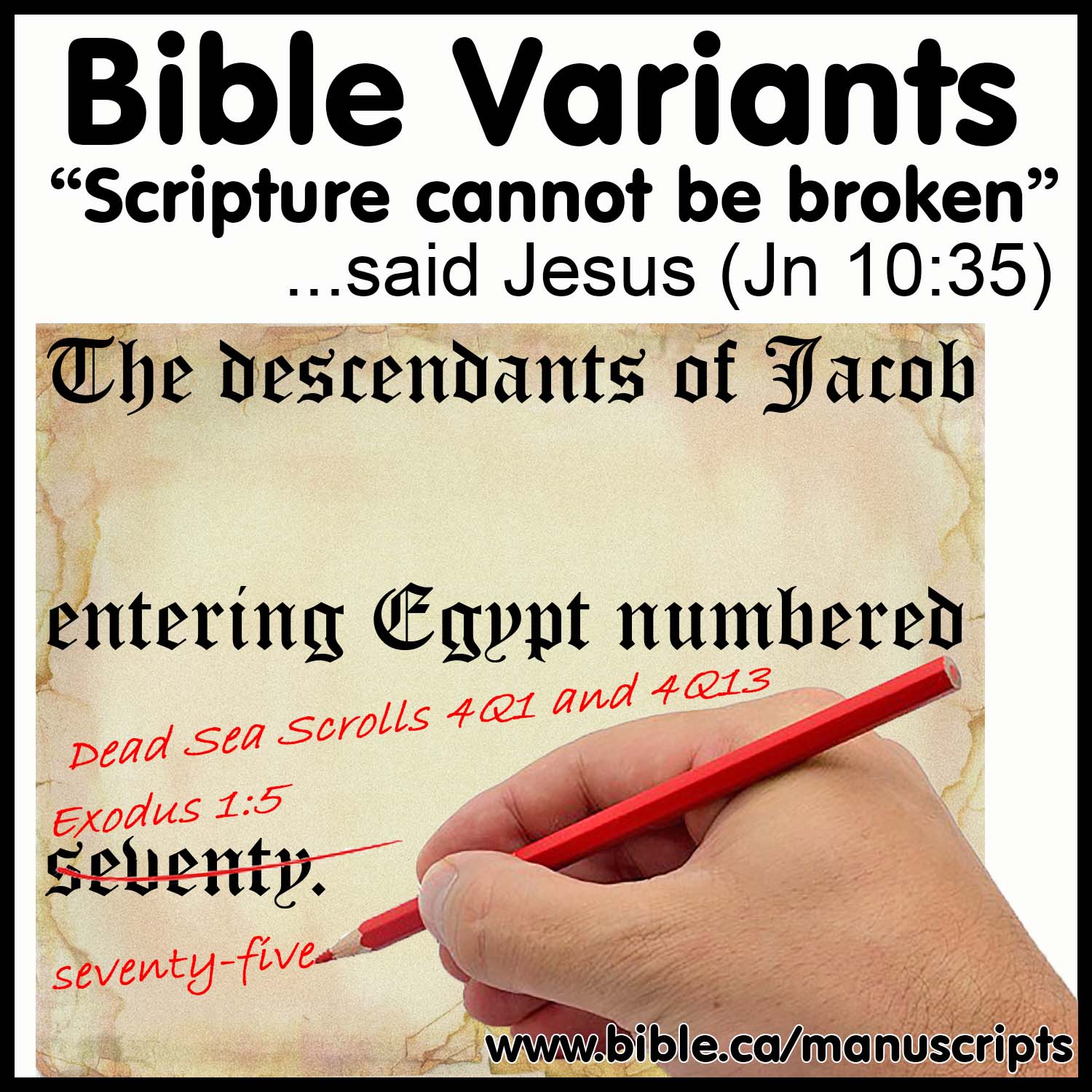Jewish Messianic Expectation at the time of Jesus Christ
See also: Messianic Expectation in Dead Sea Scrolls and Ancient Jewish Coins
Jewish Messianic Expectation at the time of Jesus Christ
1. Jewish Messianic expectation from scripture: “Messianic window” prophecy
2. Non-Biblical Jewish messianic eschatology: “days of the Messiah”
3. The messianic window of the Messiah’s arrival: 4292-6000 AC
4. John’s uses of Jewish Messianic terminology in Revelation
5. Messianic fever and expectation seen in Dead Sea scrolls: 90 BC
6. Messianic expectation seen in Jewish coins: Widows’ Mite
7. See also full outline on expectation in Dead Sea scrolls and coins
8. False Jewish Messiahs: Simon Bar Kokhba, Muhammad
9. Samaritan Messianic expectation and Samarian false Messiahs
Introduction:
1. The entire Old Testament is one big messianic prophecy, from the seed promise in the garden of Eden in Genesis to the “coming of Elijah (John) to prepare the way of the Messiah in Malachi.
2. As part of God’s providential master plan, Messianism peaked from about 100 BC down to 150 AD.
a. "Now while the people were in a state of expectation and all were wondering in their hearts about John, as to whether he was the Christ," (Luke 3:15)
b. “John the Baptist has sent us to You, to ask, ‘Are You (Jesus) the Expected One, or do we look for someone else?’” (Luke 7:19-20)
c. Many of the Jews were also looking for two messiahs (cf John 1:20) when only Jesus was predicted. "John confessed, “I am not the Christ.” They asked him, “What then? Are you Elijah?” And he said, “I am not.” “Are you the Prophet?” And he answered, “No.” Then they said to him, “Who are you, so that we may give an answer to those who sent us? What do you say about yourself?”" (John 1:20-22).
d. The Jews at the time of Jesus Christ misunderstood much of what the Messianic prophecy was really predicting. They never dreamed the land promise was heaven, the restored temple was the body of Christ, the restored kingdom was the church and that the messiah was the liberator over the devil not Rome.
3. Josephus notes the expectation of the rise of a warrior king:
a. “But now, what did most elevate them in undertaking this war, was an ambiguous oracle that was also found in their sacred writings, how, “about that time, one from their country should become governor of the habitable earth.” (313) The Jews took this prediction to belong to themselves in particular and many of the wise men were thereby deceived in their determination. Now, this oracle certainly denoted the government of Vespasian (69-79 AD) , who was appointed emperor in Judea. (314) However, it is not possible for men to avoid fate, although they see it beforehand. (315) But these men interpreted some of these signals according to their own pleasure; and some of them they utterly despised, until their madness was demonstrated, both by the taking of their city, and their own destruction.” (Josephus Wars 6.312-315)
4. The messianic window of expectation:
a. At the birth of Christ the world was 5554 years old.
b. Broad window of messianic expectation: 4292-6000 AC. The “broad window” of the messiah’s arrival started between the death of Solomon to year 6000 of earth age. The date range between the conquest and year 6000 was: 4292-6000 AC.
c. Narrow window of messianic expectation: 49 BC – 33 AD. The “narrow window of the messiah’s arrival was based upon founding of the 4th kingdom of Dan 2:44 and the 70 weeks of Dan 9:24 which translated from the formation of Rome in 49 BC to 33 AD.
I. Jewish Messianic expectation rooted in scripture:
1. KING WITH SCEPTER AND PRIEST AS STAR: Num 24:15-17; Isa 9:6-7; Zech 6:12-13; Heb 1:8; Matthew 2:2; Rev 22:16
a. "He took up his discourse and said, “The oracle of Balaam the son of Beor, And the oracle of the man whose eye is opened, The oracle of him who hears the words of God, And knows the knowledge of the Most High, Who sees the vision of the Almighty, Falling down, yet having his eyes uncovered. “I see him, but not now; I behold him, but not near; A star shall come forth from Jacob, A scepter shall rise from Israel, And shall crush through the forehead of Moab, And tear down all the sons of Sheth." (Numbers 24:15–17)
b. There would be two different people: a Messiah and an interpreter of the Law.
c. This the Jews misunderstood since Jesus was both king and priest after the order of Melchizedek.
d. "For a child will be born to us, a son will be given to us; And the government will rest on His shoulders; And His name will be called Wonderful Counselor, Mighty God, Eternal Father, Prince of Peace. There will be no end to the increase of His government or of peace, On the throne of David and over his kingdom, To establish it and to uphold it with justice and righteousness From then on and forevermore. The zeal of the Lord of hosts will accomplish this." (Isaiah 9:6–7)
e. "“Then say to him, ‘Thus says the Lord of hosts, “Behold, a man whose name is Branch, for He will branch out from where He is; and He will build the temple of the Lord. “Yes, it is He who will build the temple of the Lord, and He who will bear the honor and sit and rule on His throne. Thus, He will be a priest on His throne, and the counsel of peace will be between the two offices.” ’" (Zechariah 6:12-13)
f. Scepter = king: God the Father says of Jesus, God the son: "But of the Son He says, “Your throne, O God, is forever and ever, And the righteous scepter is the scepter of His kingdom." (Hebrews 1:8)
g. Priest = Star: The Magi and Apostle John referred to Jesus as THE STAR: "Where is He who has been born King of the Jews? For we saw His star in the east and have come to worship Him.”" (Matthew 2:2)
h. “I, Jesus, have sent My angel to testify to you these things for the churches. I am the root (branch) and the descendant of David, the bright morning star.”" (Revelation 22:16)
2. RESTORE THE TEMPLE OF DAVID: 2 Samuel 7:10-14; Amos 9:11 = Acts 15:16; John 2:19-22; Mt 26:61; Mt 27:40; Mk 14:58; Acts 6:14; Eph 1:21-22; 2:19-22
a. "“I will also appoint a place for My people Israel and will plant them, that they may live in their own place and not be disturbed again, nor will the wicked afflict them any more as formerly, even from the day that I commanded judges to be over My people Israel; and I will give you rest from all your enemies. The Lord also declares to you that the Lord will make a house for you. “When your days are complete and you lie down with your fathers, I will raise up your descendant after you, who will come forth from you, and I will establish his kingdom. “He shall build a house for My name, and I will establish the throne of his kingdom forever. “I will be a father to him and he will be a son to Me; when he commits iniquity, I will correct him with the rod of men and the strokes of the sons of men," (2 Samuel 7:10–14)
b. The idea in 2 Sam 7 that God would chasten the sinful son of David is seen fulfilled first in Solomon. Just before Solomon died in 931 BC, God chastened the lost idolatrous Solomon by giving his kingdom to Jeroboam. This brought Solomon to repentance and it was at this time (931 BC) that Solomon wrote two self rebuke books: Song of Solomon and Ecclesiastes.
c. The sinless Jesus was “made to be” a sinner and notice the same two ideas found in 2 Sam 7 (sin and the rod of correction) are found in the great Isa messianic prophecy: "Surely our griefs He Himself bore, And our sorrows He carried; Yet we ourselves esteemed Him stricken, Smitten of God, and afflicted. But He was pierced through for our transgressions, He was crushed for our iniquities; The chastening for our well-being fell upon Him, And by His scourging we are healed. All of us like sheep have gone astray, Each of us has turned to his own way; But the LORD has caused the iniquity of us all To fall on Him." (Isaiah 53:4–6)
d. Thus God rebuked Solomon for his own sin and the messiah suffered innocently and vicariously for the sins of the entire world.
e. “In that day I will raise up the fallen booth of David, And wall up its breaches; I will also raise up its ruins And rebuild it as in the days of old" (Amos 9:11)
f. "“With this the words of the Prophets agree, just as it is written, ‘After these things I will return, And I will rebuild the tabernacle of David which has fallen, And I will rebuild its ruins, And I will restore it," (Acts 15:15–16)
g. The great messianic prophecy to David that his son would be king and build the temple was fulfilled first in Solomon, then in Christ.
h. For the Bible scoffers who challenge that 2 Sam 7:10-14 is a DOUBLE PROPHECY, fabricated by New Testament writers, the Dead Sea Scrolls prove that the Jews in 90 BC viewed it as a double prophecy as well!
i. 2 Sam 7:10-14 was one of the most common and widely known messianic verses at the time of Jesus and twice the apostles apply it to fulfillment in Christ:
j. "For to which of the angels did He ever say, “You are My Son, Today I have begotten You”? And again, “I will be a Father to Him And He shall be a Son to Me”?" (Hebrews 1:5)
k. "The Lord has sworn to David A truth from which He will not turn back: “Of the fruit of your body I will set upon your throne." (Psalm 132:11)
l. "“I have made a covenant with My chosen; I have sworn to David My servant," (Psalm 89:3)
m. "“Brethren, I may confidently say to you regarding the patriarch David that he both died and was buried, and his tomb is with us to this day. “And so, because he was a prophet and knew that God had sworn to him with an oath to seat one of his descendants on his throne, he looked ahead and spoke of the resurrection of the Christ, that He was neither abandoned to Hades, nor did His flesh suffer decay. “This Jesus God raised up again, to which we are all witnesses." (Acts 2:29–32)
n. "Jesus answered them, “Destroy this temple, and in three days I will raise it up.” The Jews then said, “It took forty-six years to build this temple, and will You raise it up in three days?” But He was speaking of the temple of His body. So when He was raised from the dead, His disciples remembered that He said this; and they believed the Scripture and the word which Jesus had spoken." (John 2:19–22)
o. "and said, “This man stated, ‘I am able to destroy the temple of God and to rebuild it in three days.’ ”" (Matthew 26:61)
p. "and saying, “You who are going to destroy the temple and rebuild it in three days, save Yourself! If You are the Son of God, come down from the cross.”" (Matthew 27:40)
q. "“We heard Him say, ‘I will destroy this temple made with hands, and in three days I will build another made without hands.’ ”" (Mark 14:58)
r. "Those passing by were hurling abuse at Him, wagging their heads, and saying, “Ha! You who are going to destroy the temple and rebuild it in three days," (Mark 15:29)
s. "for we have heard him say that this Nazarene (branch), Jesus, will destroy this place and alter the customs which Moses handed down to us.”" (Acts 6:14)
t. "So then you are no longer strangers and aliens, but you are fellow citizens with the saints, and are of God’s household, having been built on the foundation of the apostles and prophets, Christ Jesus Himself being the corner stone, in whom the whole building, being fitted together, is growing into a holy temple in the Lord, in whom you also are being built together into a dwelling of God in the Spirit." (Ephesians 2:19–22)
II. Non-Biblical, 1st century Jewish Messianic beliefs: 6000 years + 1000 years “Days of the Messiah”
|
|
|
|
|
Jewish Eschatology explained in the Babylonian Talmud:
“I.88 A. Said R. Qattina, “The world will exist for six thousand years and be destroyed for one thousand, B. “as it is said, ‘And the Lord alone shall be exalted in that day’ (Is. 2:11).” C. Abbayye said, “It will be desolate for two thousand years, as it is said, ‘After two days will he revive us, in the third day, he will raise us up and we shall live in his sight’ (Hos. 6:2).” D. It has been taught on Tannaite authority in accord with the view of R. Qattina: E. Just as at the advent of the Sabbatical Year the world will lie fallow for one out of seven years. F. so it is with the world. A thousand years will the world lie fallow out of seven thousand years, G. as it is said, “And the Lord alone shall be exalted in that day” (Is. 2:11), and Scripture says, “A Psalm and song for the Sabbath Day” (Ps. 92:1)—a day that is wholly the Sabbath. H. And Scripture says, “For a thousand years in your sight are but as yesterday when they are past” (Ps. 90:4). [A day stands for a thousand years.] I.89 A. A Tannaite authority of the house of Elijah [said], “For six thousand years the world will exist. B. “For two thousand it will be desolate, two thousand years [will be the time of] Torah, and two thousand years will be the days of the Messiah. C. [97B] but on account of our numerous sins what has been lost [of those years, in which the Messiah should have come but has not come] has been lost. I.90 A. Said Elijah to R. Sala the Pious, “The world will last for no fewer than eighty-five Jubilees [of fifty years each] {4250 years}, and the son of David will come in the last one.” B. He said to him, “Will it be in the first or the last year of the last Jubilee?” C. He said to him, “I do not know.” D. “Will it come at the end or not come at the end of the fiftieth year?” E. He said to him, “I do not know.” F. R. Ashi said, “This is what he said to him: ‘Up to that time, do not look for his coming, but from that time onward, do look for his coming.’ ” I.91 A. R. Hanan, son of Tahalipa, sent to R. Joseph, “I came across a man who had in hand a scroll, written in Assyrian [block] letters in the holy language. B. “I said to him, ‘Where did you get this?’ C. “He said to me, ‘I was employed in the Roman armies, and I found it in the Roman archives.’ D. “In the scroll it is written that after four thousand two hundred ninety-two {4292} years from the creation of the world, the world will be an orphan. E. “[As to the years to follow] in some there will be wars of the great dragons, and in some, wars of Gog and Magog, and the rest will be the days of the Messiah {ie. 4292 – 6000 years from creation}. F. “And the Holy One, blessed be he, will renew his world only after seven thousand years.” (Babylonian Talmud, b. Sanh. 11:1, I.88.A–91.F) |
|
|
|
1. As early as 100 BC, the Jews had invented a non-Biblical doctrine known as the “days/times of the Messiah”.
2. Four key elements feature this Jewish eschatological doctrine:
a. The world lasts 6000 + 1000 year reign of the messiah. The world ends when the Messiah comes: The earth would end 6000 years after Creation [AC]. More specifically the world would end when the Messiah would come, between 4292AC – 6000AC. So the earth might only last 4292 years minimum or if the Messiah delays, to a maximum of 6000 years after creation. The messiah would also come NO SOONER THAN 85 Jubilees (85x50 years) after Creation (4250 AC) AND more specifically, within the 1708 year window within the years 4292AC – 6000AC years after creation.
b. A final war between good and evil involving the dragon, Gog and Magog.
c. A final judgement day.
d. A 1000 year reign of Christ the Jews called, the “Times/Days of the Messiah” where he would defeat all Israel’s enemies and usher in a period of peace.
3. In order to understand messianic expectation at the time of Jesus Christ and the early church, you must become familiar with the “Days of the Messiah” theology.
a. The apostles of Jesus and all the first Christians were familiar with this eschatological concept.
b. Peter and Paul referenced the eschatological concept and Apostle John borrowed from the imagery of this widely believed view in Rev 20 with the
c. As recorded in the Babylonian Talmud Sanhedrin 11:1, I.88.A–91.F (500 AD) the earth would last a maximum of 6000 years. The world would end followed by the 1000 year reign of the messiah which the Jews called the “days of the messiah” who brought blessings to the world. This eschatological doctrine was widely believed by the first century Jews when Jesus began his ministry in 30 AD.
d. The general view was that the earth would last only 6000 years and then the messiah would come for 1000 years defeat the enemies of Israel and usher in global peace on earth and blessings to all.
e. The Zealots (of whom was one of Jesus’ disciple) and all of Jesus 12 disciples believed in this view as evidenced in Acts 1:6 “Lord, is it at this time You are restoring the kingdom to Israel?””
f. All this in spite of Jesus saying to Pilot: “My kingdom is not of this world. If My kingdom were of this world, then My servants would be fighting so that I would not be handed over to the Jews; but as it is, My kingdom is not of this realm.” (John 18:36)
g. The disciples of Jesus had many things wrong, including a working knowledge of the resurrection after three days.
h. Shockingly, the false doctrine of Premillennialism, correctly documents the Jewish view of the Messiah as an earthly warrior king who will reign physically and literally upon the earth for 1000 years.
4. 30 AD: The New Testament references this Jewish eschatological “Days of Messiah” terminology:
a. Peter, Paul and John all referenced this universally believed eschatological doctrine of the “days of the Messiah” and the blessings the messiah would bring.
b. Peter in his second sermon said, “Therefore repent and return, so that your sins may be wiped away, in order that times of refreshing may come from the presence of the Lord; and that He may send Jesus, the Messiah appointed for you" (Acts 3:19-20).
c. Paul said that “all spiritual blessings are in the Messiah” (Eph 1:3).
d. BOOK OF REVELATION: Apostle John borrowed the “days of the messiah” imagery from contemporary Jewish thinking and used it in the book of Revelation. John combined all four of its key elements of “Wars, dragons, 1000 years and Gog and Magog into a single passage: "And he laid hold of the dragon, the serpent of old, who is the devil and Satan, and bound him for a thousand years … When the thousand years are completed, Satan will be released from his prison, and will come out to deceive the nations which are in the four corners of the earth, Gog and Magog, to gather them together for the war; the number of them is like the sand of the seashore." (Revelation 20:2, 7-8) Notice that both the ancient Jewish scroll AND Revelation combine the four elements into a single passage. This simply cannot be accidental. In the authors upcoming commentary on the book of Revelation, it will be shown that John also borrowed much imagery from the first century Synagogue songbook, “Songs of Sabbath Sacrifice” as a blueprint for the structure of the entire book written in 66 AD, at the beginning of the first Jewish war, to warn the Jerusalem Christians to flee before its destruction in 70 AD.
e. Compare Revelation 20 to the first century Jewish Eschatological scroll: In the scroll it is written that after four thousand two hundred ninety-two {ie. 4292} years from the creation of the world, the world will be an orphan. E. “[As to the years to follow] in some there will be wars of the great dragons, and in some, wars of Gog and Magog, and the rest will be the days of the Messiah {ie. 4292 – 6000 years from creation}. F. “And the Holy One, blessed be he, will renew his world only after seven thousand years.” (Babylonian Talmud, b. Sanh. 11:1, I.91, 500 AD)
|
John borrowed from first century Jewish eschatology in Revelation |
|||
|
|
Seder Olam 160 AD |
Talmud, b. Sanh. 11:1, I.91 |
Revelation 20:2, 7-8 |
|
War |
|
|
|
|
Gog and Magog |
|
|
|
|
Resurrection |
|
|
|
|
Judgement |
|
|
|
|
Hell |
|
|
|
|
Dragon |
|
|
|
|
1000 years “Days of Messiah” |
|
|
|
5. The Hebrew scroll found in Roman archives echoes Revelation 20:2, 7-8:
a. The Babylonian Talmud (500 AD) says that a first century AD Hebrew language scroll recorded.
b. “A. R. Hanan, son of Tahalipa, sent to R. Joseph, “I came across a man who had in hand a scroll, written in Assyrian [block] letters in the holy language. B. “I said to him, ‘Where did you get this?’ C. “He said to me, ‘I was employed in the Roman armies, and I found it in the Roman archives.’ In the scroll it is written that after four thousand two hundred ninety-two {ie. 4292} years from the creation of the world, the world will be an orphan. E. “[As to the years to follow] in some there will be wars of the great dragons, and in some, wars of Gog and Magog, and the rest will be the days of the Messiah {ie. 4292 – 6000 years from creation}. F. “And the Holy One, blessed be he, will renew his world only after seven thousand years.” (Babylonian Talmud, b. Sanh. 11:1, I.91, 500 AD)
c. In Revelation, John combined all four of its key elements of “Wars, dragons, 1000 years and Gog and Magog into a single passage: "And he laid hold of the dragon, the serpent of old, who is the devil and Satan, and bound him for a thousand years … When the thousand years are completed, Satan will be released from his prison, and will come out to deceive the nations which are in the four corners of the earth, Gog and Magog, to gather them together for the war; the number of them is like the sand of the seashore." (Revelation 20:2, 7-8)
6. 160 AD: Seder Olam Rabbah:
a. It is clear that Seder Olam was composed with the “days of Messiah” Jewish eschatological doctrine as its foundation.
b. “Ahaziah's second year, Elijah was hidden and will not be seen again until King Messiah will come, then he will be seen, then hidden a second time until Gog and Magog come. But now he writes down the deeds of all generations. (2Kings 1:17) "He (Ahaziah) died, following the Eternal's word that Elijah had spoken."” (Seder Olam 17:66, 160 AD)
c. “The judgment of Gog in the future will be 12 months as it is said (Is. 18:6): "They will be abandoned together for the mountain birds of prey and the animals of the land; in summer the birds of prey will flock to them and all the animals of the earth will winter on them." The judgment of the evildoers in hell? is 12 months as it is said (Is. 66:23): "And it will be from month to month etc." Rebbi Yohanan ben Nuri said: from Passover to Pentecost, as it is said (loc. cit.) "and from holiday to holiday," After 12 months, the souls of Jewish sinners who transgressed Torah and commandments disappears and their bodies decompose, they become ashes, hell expels them, the wind disperses them under the feet of the Just as it is said (Mal. 3:21): "You will suppress the evildoers, for they will be ashes under the feet of the Just, on the day that I shall create, says the Eternal of Hosts." But those who separate themselves from the Jewish community, for example, (Sadducees,) informers, hypocrites and epicureans, as well as those who cause terror in the Land of the Living, those who deny the resurrection of the dead, those who say that Torah is not of divine origin and Jews who scoff at the words of the sages, will be locked in hell and they will be judged in it forever as it is said (Is. 66:24): "They shall go out and look at the corpses of the men who sin against me, for their worm shall not die and their fire not burn out; they shall be an object of repulsion for all flesh." Not only that, but hell may wear out but they will not wear out as it is said (Ps. 49:15): "And their shapes will wear out hell, not to be his dwelling," from His dwelling (zebu/) He will wear out their forms but their forms will wear out hell. What caused this for them? That they lifted their hands against zebu/ (dwelling), as it is said: "His dwelling" and zebu/ always means the Temple as it is said (1Kings 8:13): "I certainly built a zebal house for You." (Seder Olam 3:17, 160 AD)
d. "After 62 sabbatical periods, the anointed will be eliminated; a dominant people will destroy the holy city, its end in a flood, and to the end of war destruction is decreed. For one sabbatical period the covenant of the many will prevail, but for half a sabbatical period he will abolish sacrifice and offering, on the wing of an abomination of devastation, until decreed total ruin is poured out on the devastator." R. Yose said, 70 sabbatical periods [490 years] from the destruction of the first Temple [actually 587 BC] to the destruction of the second Temple [70 AD]; 70 (years) in its destruction and 410 [420] when it was rebuilt. [the actual period is 587 + 70 = 657 years not 490]. And why does scripture say, 70 weeks?” (Seder Olam, 160 AD)
7. 200 AD Mishnah:
a. “A Also he would list five things which [last for] twelve months: B (1) the judgment of the generation of the Flood is twelve months; C (2) the judgment of Job is twelve months; D (3) the judgment of the Egyptians is twelve months; E (4) the judgment of Gog and Magog in the time to come is twelve months; F and (5) the judgment of the wicked in Gehenna is twelve months, G as it is said, It will be from one month until the same month [a year later] (Is. 66:23). H R. Yohanan b. Nuri says, “From Passover to Pentecost, as it is said, From one Sabbath until the next Sabbath (Is. 66:23).” (Mishnah, m. 'Ed. 2:10, 200 AD)
b. “But sages say, “The days of your life [would include only] this world. All the days of your life—to include the messianic age.” (Mishnah, m. Berakot 1:5 E)
8. 250 AD Tosefta:
a. “And sages say, “The days of your life [would have included only] this world; all the days of your life includes the messianic age”. (Tosefta, t. Ber 1:10 E, 250 AD)
b. “and [the benediction] for David [i.e., for the restoration of the Davidic monarchy, the coming of the Messiah] in [the benediction concluding] “Builder of Jerusalem.”” (Tosefta, t. Ber 3:25 D, 250 AD)
c. “M. R. Yosé says, “A flood affecting everything there will not be, but a flood of pestilence there will be for the nations of the world in the days of the Messiah” (Tosefta, t. Taʿaniyot 2:13 M)
d. “2:7 A. R. Judah says, “There are seven strings in the harp of the present age, as it is said, In thy presence there is fulness (ŚB‘) of joy.” (Ps. 16:11) B. “But in the time of the Messiah, there will be eight, as it is said, To the choirmaster: according to the Sheminith (Ps. 12:1)—on the eighth string. C. “[And] in the future which is coming, [there will be] ten, as it is said, Praise the Lord with the lyre, make melody to him with the harp of ten strings (Ps. 33:2).”” (Tosefta, t. 'Arak. 2:7, 250 AD)
a. The Babylonian Talmud (500 AD) says that a first century AD Hebrew language scroll recorded: “A. R. Hanan, son of Tahalipa, sent to R. Joseph, “I came across a man who had in hand a scroll, written in Assyrian [block] letters in the holy language. B. “I said to him, ‘Where did you get this?’ C. “He said to me, ‘I was employed in the Roman armies, and I found it in the Roman archives.’ In the scroll it is written that after four thousand two hundred ninety-two {ie. 4292} years from the creation of the world, the world will be an orphan. E. “[As to the years to follow] in some there will be wars of the great dragons, and in some, wars of Gog and Magog, and the rest will be the days of the Messiah {ie. 4292 – 6000 years from creation}. F. “And the Holy One, blessed be he, will renew his world only after seven thousand years.” (Babylonian Talmud, b. Sanh. 11:1, I.91)
b. “I.88 A. Said R. Qattina, “The world will exist for six thousand years and be destroyed for one thousand, B. “as it is said, ‘And the Lord alone shall be exalted in that day’ (Is. 2:11).” C. Abbayye said, “It will be desolate for two thousand years, as it is said, ‘After two days will he revive us, in the third day, he will raise us up and we shall live in his sight’ (Hos. 6:2).” D. It has been taught on Tannaite authority in accord with the view of R. Qattina: E. Just as at the advent of the Sabbatical Year the world will lie fallow for one out of seven years. F. so it is with the world. A thousand years will the world lie fallow out of seven thousand years, G. as it is said, “And the Lord alone shall be exalted in that day” (Is. 2:11), and Scripture says, “A Psalm and song for the Sabbath Day” (Ps. 92:1)—a day that is wholly the Sabbath.” (Babylonian Talmud Sanh. 11:1, I.88.A–G)
c. ”It has been taught on Tannaite authority in accord with the view of R. Qattina: E. Just as at the advent of the Sabbatical Year the world will lie fallow for one out of seven years. F. so it is with the world. A thousand years will the world lie fallow out of seven thousand years, G. as it is said, “And the Lord alone shall be exalted in that day” (Is. 2:11), and Scripture says, “A Psalm and song for the Sabbath Day” (Ps. 92:1)—a day that is wholly the Sabbath. H. And Scripture says, “For a thousand years in your sight are but as yesterday when they are past” (Ps. 90:4). [A day stands for a thousand years.] (Babylonian Talmud, b. Sanh. 11:1, I.88.D–H)
d. “Said R. Hanina, “When four hundred years have passed from the destruction of the Temple, if someone says to you, ‘Buy this field that is worth a thousand denars for a single denar, don’t buy it.” B. In a Tannaite formulation it was repeated: From the year 4231 after the creation of the world, if someone says to you, ‘Buy this field that is worth a thousand denars for a single denar, don’t buy it.” C. What is the difference between these two formulations? D. The difference is three years, the latter being three years longer.” (Babylonian Talmud Abodah Zarah 1:3, II.8.A–D)
10. 2017 AD Present day: The Jews and Rabbis today continue to believe the same “days of Messiah” theology
a. Jews today are in huge trouble because even according to their own Hebrew Masoretic Tanakh, the messiah is 191 years over due. This is why today, Jews use the corrupt Seder Olam chronology because it gives them 222 extra years (as of 2017 AD) before the Messiah MUST come.
b. Jews today continue with the same 6000 + 1000 year system of the first century: “Jacob in Gen 49:1 desired to reveal to them the "end of days" which are “the time of the Messiah””. (Rashi chumash by Rabbi Shraga Silverstein, 2014 AD)
c. Jews today follow the corrupt Seder Olam chronology in opposition to their own Jewish Tanakh (Masoretic text). For example, Saturday, 23 September 2017 AD = 3rd of Tishri, 5778 AC (After creation). This date comes from the Seder Olam.
d. The same date from the Masoretic text of their own Bible dates Saturday, 23 September 2017 AD = 6191 AC (After Creation)
e. This same idea continues today among many modern Jews that the earth will last 6000 years, followed by the “time of the messiah”.
|
Years after creation = September 2017 AD |
||
|
Septuagint |
Masoretic |
Seder Olam |
|
7461 AC |
6191 AC |
5778 AC |
11. Jehovah’s Witnesses predicted the world would end in 1975 AD using Jewish “days of Messiah” false theology:
a. It is comical that this ancient Jewish “world must end 6000 years after creation” theology was directly adopted by the Jehovah’s Witnesses who predicted the end of the world in year 6000 AC in 1975 AD but used the flawed and corrupted Masoretic Genesis chronology. After making multiple crystal clear public statements in the Watchtower that Jesus would return in 1975, they blamed the failed prediction on their followers in 1976: "It may be that some who have been serving God have planned their lives according to a mistaken view of just what was to happen on a certain date or in a certain year [ie 1975]. They may have, for this reason, put off or neglected things that they otherwise would have cared for. But they have missed the point of the Bibles warnings concerning the end of this system of things, thinking that Bible chronology reveals the specific date." (Watchtower, July 15, 1976, p. 440) And the bulk of JW’s accepted this beating from their masters and continued in blind obedience to the Watchtower. Those that left “THE TRUTH” became atheists so the Devil kept them in his clutches.
i. Modern “end of the world cults” William Miller (Seventh-day Adventists) and Charles Taze Russell (Jehovah’s Witnesses) all follow the non-Biblical Jewish eschatology. The Babylonian Talmud (500 AD) discusses the “days of the Messiah” in detail. This ancient Jewish “end of the world” theology is as non-biblical as the Jehovah’s Witnesses who predicted the end of the world in 1975 AD based upon the same flawed Masoretic text chronology and the Babylonian Talmud.
ii. JW’s have predicted the end of the world countless times but a huge and widely documented failed prediction was that the world would end in 1975 AD.
b. Jehovah’s Witnesses source of their false doctrine: the Babylonian Talmud: “In the scroll it is written that after four thousand two hundred ninety-two {ie. 4292} years from the creation of the world, the world will be an orphan. E. “[As to the years to follow] in some there will be wars of the great dragons, and in some, wars of Gog and Magog, and the rest will be the days of the Messiah {ie. 4292 – 6000 years from creation}. F. “And the Holy One, blessed be he, will renew his world only after seven thousand years.” (Babylonian Talmud, b. Sanh. 11:1, I.91)
i. 1968 AD: "Just think, brothers, there are only about ninety months left before 6,000 years of mans existence on earth is completed... The majority of people living today will probably be alive when Armageddon breaks out, and there are no resurrection hopes for those who are destroyed then. So, now more than ever, it is vital not to ignore that spirit of wanting to do more." (Kingdom Ministry, March 1968, p. 4 [note: 1968 + 90 months = 1975])
ii. 1969 AD: More recently earnest researchers of the Holy Bible have made a recheck of its chronology. According to their calculations the six millenniums of mankind's life on earth would end in the mid-seventies. Thus the seventh millennium from mans creation by Jehovah god would begin within less than ten years. Apart from the global change that present-day world condition indicate is fast getting near, the arrival of the seventh millennium of mans existence on earth suggests a gladsome change for war-stricken humankind. ...In order for the Lord Jesus Christ to be Lord even of the Sabbath day, his thousand-year reign would have to be the seventh in a series of thousand-year periods or millenniums. (Matt 12:8, AV) Thus it would be a sabbatic reign. Since early in the existence of mankind Satan the Devil has been on the loose, making the human family to toil in hard bondage, causing the earth to be filled with violence before the global flood of Noahs day and inducing the same old earth to be filled with even greater violence today. Soon now six millenniums of his wicked exploiting of mankind as his slaves will end, within the lifetime of the generation that has witnessed world events since the close of the gentile times in 1914 till now, according to the prophetic words of Jesus in Matthew 24:34. Would not, then, the end of six millenniums of mankind's laborious enslavement under Satan the Devil be the fitting time for Jehovah God to usher in a Sabbath millennium for all his human creatures? Yes, indeed! And his King Jesus Christ will be Lord of that Sabbath." (Watchtower, Nov. 15, 1969, p. 622, 623)
iii. 1976 AD: "It may be that some who have been serving God have planned their lives according to a mistaken view of just what was to happen on a certain date or in a certain year. They may have, for this reason, put off or neglected things that they otherwise would have cared for. But they have missed the point of the Bibles warnings concerning the end of this system of things, thinking that Bible chronology reveals the specific date." (Watchtower, July 15, 1976, p. 440)
12. “Times of the Messiah” eschatology applied to Jesus, Simon and Muhammad in both the Septuagint and Masoretic Chronologies.
a. Jewish chronology dates are AC = After creation. The entire world follows the Christian dating of AD (the year Jesus was born)
b. This introductory chart maps the 6000 year limit of earth existence onto the LXX and MT.
c. The Jewish Tanakh has already proven the entire Jewish system wrong because their messiah had to come by 1826 AD.
d. The Seder Olam chronology is used by the Jews today in contradiction to their own Tanakh because it pushes the 6000 years forward to 2239 AD.
e. Jesus Christ is the only option today as the Jewish Messiah. The vast majority of Jews today have not read the New Testament, and are quite resistant to doing so. Part of the reason is that modern Jewish Rabbis lie and misrepresent the textual and historical integrity of the New Testament which is in fact, has 10 times fewer variants and 10 times greater manuscripts. If you tell a Jew that the New Testament is 100 times more reliable than the Tanakh, only the truth seekers who LOVE TRUTH will understand.
f. Time has run out for the Jews and their expected messiah based upon their 2100 year old concept that the world will only last 6000 years.
|
Jewish Eschatology applied to Jesus, Simon bar Kokhba and Muhammad |
|||||||
|
|
Creation date/6000 years end of world |
Messiah comes between year 4292 - 6000 AC |
Jesus Christ: 1 BC |
Simon Christ Simon bar Kokhba 132-5 AD |
Lifetime of the Jews who altered the MT chronological numbers: 250 AD |
Muhammad Christ 610 AD |
Today: 2017 (Jewish 5777AC based upon Seder Olam) |
|
Septuagint LXX |
446 AD |
Year 5554 AC Perfect fit. Messiah born with 446 years to spare! |
Year 5686 AC Perfect fit |
Year 5806 AC Perfect fit |
Year 6164 AD Muhammad cannot be messiah born 170 years too late. |
FAIL Messiah never came. Must be Jesus Christ |
|
|
Masoretic MT1 (correct, Christian) |
4174 BC 1826 AD |
118 AD - 1826 AD |
Year 4174 AC. Jesus cannot be messiah because He was born 118 years too early. |
Year 4306 AC Perfect fit within 14 years. (2 periods of 7) |
Year 4424 AC Perfect fit |
Year 4784 AC Perfect fit |
FAIL Messiah never came. Must be Jesus Christ. |
|
Masoretic MT2 (incorrect, Jewish) |
4114 BC 1886 AD |
178 AD - 1886 AD |
Year 4114 AC. Jesus cannot be messiah because He was born 178 years too early. |
Year 4246 AC Perfect fit within 74 years. |
Year 4364 AC Perfect fit |
Year 4724 AC Perfect fit |
FAIL Messiah never came. Must be Jesus Christ |
|
Seder Olam3 (Used by Jews today) |
3761 BC 2239 AD |
531 - 2239 AD |
Year 3761 AC. Jesus born 531 years early |
Year 3893 AC. Simon Christ 400 years too early. |
Year 4011 AC. Jews living in 250 AD will die before Messiah comes |
Year 4371 AC. Perfect fit |
Messiah must come by 2239 AD = 6000AC |
|
Although Christians and todays Jews use the same Masoretic text to determine the age of the earth, the Jews have always had a 60 year error in their chronology in dating how old Terah was when Abraham was born. The old Testament is ambiguous as to how old Terah was at the birth of Abraham, but the inspired Stephen cleared it up in Acts 7:4. It is obvious then, that the first century Jews agreed with Stephen that Terah was 130 years old when Abraham was born, but Jews after 70 AD began revising and corrupting their own chronologies. 1. Correct Christian chronology: Acts 7:4: Terah was 130 years old when Abraham was born. Abraham left Haram when he was 75 after Terah died age 205. 2. False modern Jewish Chronology is 60 years shorter than the correct chronology: Terah was 70 years old when Abraham was born. Abraham left Haram when he was 75 Terah lived another 60 years in Haram until he died at age 205. 3. The Seder Olam chronology incorrectly dates the birth of Abraham to when Terah was 70 and the short sojourn in Egypt of 215 years instead of the correct 430 years. |
|||||||
III. The messianic window: 4292-6000 AC
1. The messianic window of expectation:
a. At the birth of Christ the world was 5554 years old.
b. Narrow window of messianic expectation: 49 BC – 33 AD.
i. The “narrow window of the messiah’s arrival was based upon founding of the 4th kingdom of Dan 2:44 and the 70 weeks of Dan 9:24 which translated from the formation of Rome in 49 BC to 33 AD.
c. Broad window of messianic expectation: 4292-6000 AC.
i. The “broad window” of the messiah’s arrival started between the death of Solomon to year 6000 of earth age. The date range between the conquest and year 6000 was: 4292-6000 AC.
ii. The broad window was derived from the dual prophecy of 2 Sam 7:14 as the earliest date the messiah, some of David, could come.
d. So both the broad and narrow windows of the messiah’s coming were based directly upon scripture and divine revelation.
i. The window of the messiah opened in 4292 AC (931 BC) was based upon 2 Sam 7:14.
ii. The window of the messiah closed in 6000 AC (777 AD) based upon the two prophecies of Dan 2 and 9. Which set 40 AD as the latest the messiah could come.
iii. However, the idea that the earth was last 6000 years, perhaps echoing the 6 days of creation, was deeply engrained in the Jewish mind so they set the window closing date at 777 AD
iv. The Messiah could come anytime within the 1708 year window of 931 BC to 777 AD.
3. Narrow window of messianic expectation: 49 BC – 33 AD. The “narrow window of the messiah’s arrival was based upon founding of the 4th kingdom of Dan 2:44 and the 70 weeks of Dan 9:24 which translated from the formation of Rome in 49 BC to 33 AD.
a. Dan 2:44 prophesied that the kingdom of God would come in the days of the fourth world kingdom of Rome: 49 BC. (Babylon, Persia, Greece and Rome.)
b. Dan 9:24 prophesied that after 490 years from the decree in Ezra 7:7ff to rebuild Jerusalem the messiah would come in 33 AD.
4. Broad window of messianic expectation: 4292-6000 AC. The “broad window” of the messiah’s arrival started between the death of Solomon to year 6000 of earth age. The date range between the conquest and year 6000 was: 4292-6000 AC.
a. The broad window for the messiah opened 4292 AC, which was the earliest date he could come.
b. The broad window for the messiah closed in 6000 AD, which is the latest date he could come.
c. We know for certain that before 70 AD the chronological numbers in the Hebrew Masoretic and Greek Septuagint were the same and produced the same age of the earth at 5554 BC. Using 5554 AC for creation, and making adjustments for both the short sojourn and the age of Terah of 70 when Abraham was born, 4292 AC translates to about 931 BC which is the exact year of Solomon Died.
d. The death of Solomon in 4292 AC the earliest the messiah could come because of the prophecy of 2 Sam 7:14 that God would seat one of David descendants upon the throne.
e. We know from the Dead Sea Scroll 4Q174-4QFlorilegium that the Jews around 100 BC viewed 2 Sam 7:14 as a messianic prophecy. They also correctly viewed 2 Sam 7 as a DOUBLE PROPHECY, meaning that two of David’s sons would build the temple and sit on the throne: Solomon and the messiah, Jesus Christ.
f. So it makes perfect sense that the earliest the messiah could come is the death of Solomon.
g. While this entire “window of the messiah” 4292-6000 AC was formulated in the 1st century BC, they looked back and academically set the opening window at a previous time. This meant that the Jews in 100 BC were deep inside the window exception for the coming of the messiah, as witnessed in the messianic fever in the New Testament in the ministry of John.
h. The key is to understand the chronological thinking of the Jews around 100 BC. While they were using the longer chronologies that date creation to 5554 BC, this number is based upon our modern understanding.
i. We know that Terah was 130 when Abraham was born not 70 so we must subtract the difference of 60 years from 5554 BC because the Jews universally (and wrongly) believed Terah’s age was 70.
ii. We also know that Israel spent 430 years in Egypt, not 215 as was commonly believed in 100 BC, so we must again subtract another 215 years from the 5554 BC number. We also know that Shem was born when Noah was 502 years old, so we need to subtract 2 years from 5554 BC because the Jews didn’t understand this in 100 BC.
iii. The actual number we know to be creation of 5554 BC but we must use the same set of numbers they had as a base to work from. It doesn’t matter if their numbers were right or wrong, what matters is that they used their own numbers to calculate the opening of the messianic window in year 4292 BC
iv. Demetrius and Julius Sextus both stated that creation was in 5500 BC which translates into the ancient Jewish mind of 100 BC to 5500 - 60 - 215 = 5225 BC.
v. When we use 5279 BC as the creation date in the mind of the Jew in 100 BC then subtract the opening window for the messiah of 5225 BC-4292 AC we arrive at a date of 931 BC which is the EXACT date of Solomon’s death.
i. So the larger window of the Messiah opened in 931 BC at the death of messiah based directly upon the dual prophecy of 2 Sam 7:14 that David’s second son, the messiah, could come at any time after that.
|
Solomon dies in 931 BC = c 4292 BC The year 4292 AC in the mind of the Jews in 100 BC |
||||
|
|
Creation |
Short sojourn 215 Terah 70, Shem 2 |
4292 AC |
BC date |
|
Demetrius: 225 BC |
5500 BC |
-277 |
-4292 |
931 BC |
|
Julius Sextus: 221 AD |
5500 BC |
-277 |
-4292 |
931 BC |
|
Josephus: 70 AD |
5467 BC |
-277 |
-4292 |
898 BC |
|
2 Esdras 14: 90 AD |
5464 BC |
-277 |
-4292 |
895 BC |
|
Demetrius must have used the long sojourn of 430 years. “from Adam until Joseph's brothers came into Egypt there were 3624 years; and from the deluge until Jacob's coming into Egypt, 1360 years” (Demetrius the Chronographer, Jewish historian, Fragment two, lines 17-8, 225 BC) |
||||
5. Seder Olam Rabbah adopted the messianic window numbers: 4292-6000 AC
a. Seder Olam Rabbah (160 AD) is a corrupt chronological dating system designed to disconnect Jesus Christ from Bible prophecy by pushing Him OUTSIDE the messianic window.
b. The Jews at Zippori reduced the age of the earth from 5554 BC to 3761 BC which is a whopping 1793 years difference.
c. Seder Olam creation at 3761 BC set the opening window of the Messiah at (3761 BC- 4292) 531 AD. That means that Jesus could not be the Messiah (in the self-deluded Jewish mindset) because Jesus came 500 years too soon!
d. So although they changed the age of the earth, the Jews continued to use the original window of the messiah of 4292-6000 AC.
e. To this present day, Jews are using this as a way to prove Jesus cannot be the messiah AND hope that their “future messiah” will come before the new window closes in (3761BC - 6000) 2239 AD.
f. After 2239 AD, they will likely just do what all the other irresponsible dates setters have done historically like Harold Camping: The Jews will quietly dump the old system and come up with a new one to buy them more time and new hope!
IV. Terminology: “Days of Messiah” and “We’re living in the last days”
1. The “days of the Messiah” terminology was as widely believed at the time of Christ as the “Were living in the last days” terminology today.
a. Both groups have heightened expectation of the messiah.
b. The former predicted the coming of Jesus using real Bible prophecy to create a realistic window of 49 BC to 33 AD.
c. The latter predict the second coming by using the false sign of Israel gaining national statehood in 1948 AD as the opening of the messianic window.
2. Jehovah’s witnesses created a false opening and closing window of the second coming from 1914 to 1954 AD (one generation of 40 years.)
a. Multiple predictions of the second coming were made including 1925, 1932 etc.
b. 1974 "this remnant of anointed ones have identified themselves on the pages of history since 1914 C.E. Before this year members of this anointed remnant had been earnestly studying God's Word apart from Christendom. They put the Holy Bible ahead of man-made religious traditions. As early as 1876 they were publishing that the Gentile Times of 2,520 years would terminate in the year 1914. Events that have taken place from that year onward prove they were not wrong." (God's "Eternal Purpose" Now Triumphing For Man's Good; 1974; p. 178-179)
c. Today JW’s have entirely renounced their goofy “within one generation from 1914 AD Christ would return” doctrine and tell their blind followers they got NEW LIGHT. (actually black light).
3. But evangelical premillennialists are no better than Jehovah’s Witnesses in marking the opening of the window of messianic expectation in 1948 AD when Israel became a nation.
a. Like Jw’s, there were predictions of the end of the world one generation later in 1988 AD.
b. Like Jw’s, today all the fervor is forgotten and the founding of Israel in 1948 is either downplayed, redefined or ignored.
4. Unlike the coming of the messiah in 33 AD, there are ZERO signs or indications of any type, including events, or chronological markers for the second coming. Evangelical premillennialists parroting “WE ARE LIVING IN THE END TIMES” are just mini-Herold Campings.
5. It all needs to stop because the “end times” or “lasts days” began at the birth of Christ and continue till the second coming.
a. This is what the 1000 years of the Messiah is talking about in Revelation 20.
b. Not a literal 1000 years, but a symbolic period from first advent of Christ to his future second coming.
|
V. Messianic Fever and Expectation seen in Dead Sea Scrolls: (90 BC)
See also full outline on expectation in Dead Sea scrolls and coins
Two key scrolls 4Q175-4QTestimonia and 4Q174-4QFlorilegium document in detail, messianic thinking before the birth of Christ. Like a topical sermon outline, these two scrolls quote all the key messianic bible verses and thread them into a messianic narrative. Here we examine not only a list of Bible passages Jews viewed as messianic, we see how they interpreted them. Most importantly, we can identify the symbols they borrowed from these messianic prophecies like Star, Temple, Branch, Prince, Priest and conquering/liberating King etc. All the symbols listed below are found in two Dead Sea Scrolls found in cave 4 at Qumran.
|
Messianic symbols used in Dead Sea Scrolls and coins (See full outline on Messianic expectation in the DSS)
|
||
|
Messianic symbol |
Prophecy |
Archeological source |
|
Star, Scepter, priest-king, liberator (fulfilled in Star of Bethlehem) |
Num 24:15-17; Isa 9:6-7; Zech 6:12-13 |
Jannaeus: Widow’s Mite: Hendin 1151, 1152 Antigonus II: Hendin 1163 Simon Christ Bar Kokhba “son of Star” over temple on Hendin 1388, liberator “simon”: Hendin 1440. |
|
Lawgiver like Moses |
Deut 18:18-19; Jer 31:31; Isa 2:2-4 |
|
|
Branch of David, temple builder, restorer, eternal king; Harp of David |
2 Sam 7:10-14; Amos 9:11 |
Hendin coin # 1388 had “Simon” bar Bar Kokhba around the temple. Hendin 1377, 1406 had “Simon Prince” on obverse and Davidic harp on reverse. Hendin 1436,1424 had the word “Simon” around the harp of David on the same side. Hendin 1389, 1406, 1429, 1435 had Simon on obverse and the harp on reverse. |
|
Judgement, abomination of desolation |
Daniel 12:10 |
|
|
Two men: Star King + interpreter of the law priest |
Not scriptural but found in DSS 4QFlorilegium
|
The mistaken concept that the messianic prophecies spoke of two men arising together was widely believed in the first century and found in 4QFlorilegium and illustrated in one coin of Simon Christ Bar Kokhba in year three. Hendin coin # 1389 featured Simon (Star/king) on obverse and Eleazar the High priest (interpreter) on the reverse. Two sister coins: Hendin 1407, 1408 have a larger 25mm bronze with “Simon yr 2 freedom of Israel” (H1407) and smaller 20 mm bronze “Eleazar yr 2 freedom of Israel” (H1408) showing their misguided dual role by two men in the “days of the Messiah” theology. |
|
Messiah coming in 70 Weeks (490 years) |
Daniel 9:24 |
Seder Olam (150 AD) See below |
|
See full outline on Messianic expectation seen in Dead Sea Scrolls and Jewish coins |
||
VI. Messianic Expectation seen in first century Jewish coins:
See also full outline on expectation in Dead Sea scrolls and coins
1. All Messianic symbolism on Jewish coins can be traced back to specific Bible verses: (see above)
a. There are five messianic symbols used on Jewish coins that are drawn directly from messianic prophecy that predate Christ including Star, Temple, Prince, Priest, King, David Harp etc.
2. The author has personally excavated most of the coins discussed here and has published a book on Bible coins.
a. “Widow’s mite”: The Messianic Star surrounded by a kings diadem coin (Meshorer “L series) is the most common excavated in Israel at every archeological site.
b. The Messianic star is witnessed in the Dead Sea Scroll 4Q175-4QTestimonia, traces its origin to Gen 24:17 and was fulfilled in Star of Bethlehem the night Jesus was born.
c. The later Roman’s could not have missed the symbolism of a rising king on more common the “Widow’s Mite” in the pocket of every peasant.
d. The messianic fervor made the Roman’s sensitive to the charge that Jesus of Nazareth was the Jewish conquering and liberating messianic king. It was the central charge that got Him crucified.
e. The
prophecy of fulfilled in Star of Bethlehem
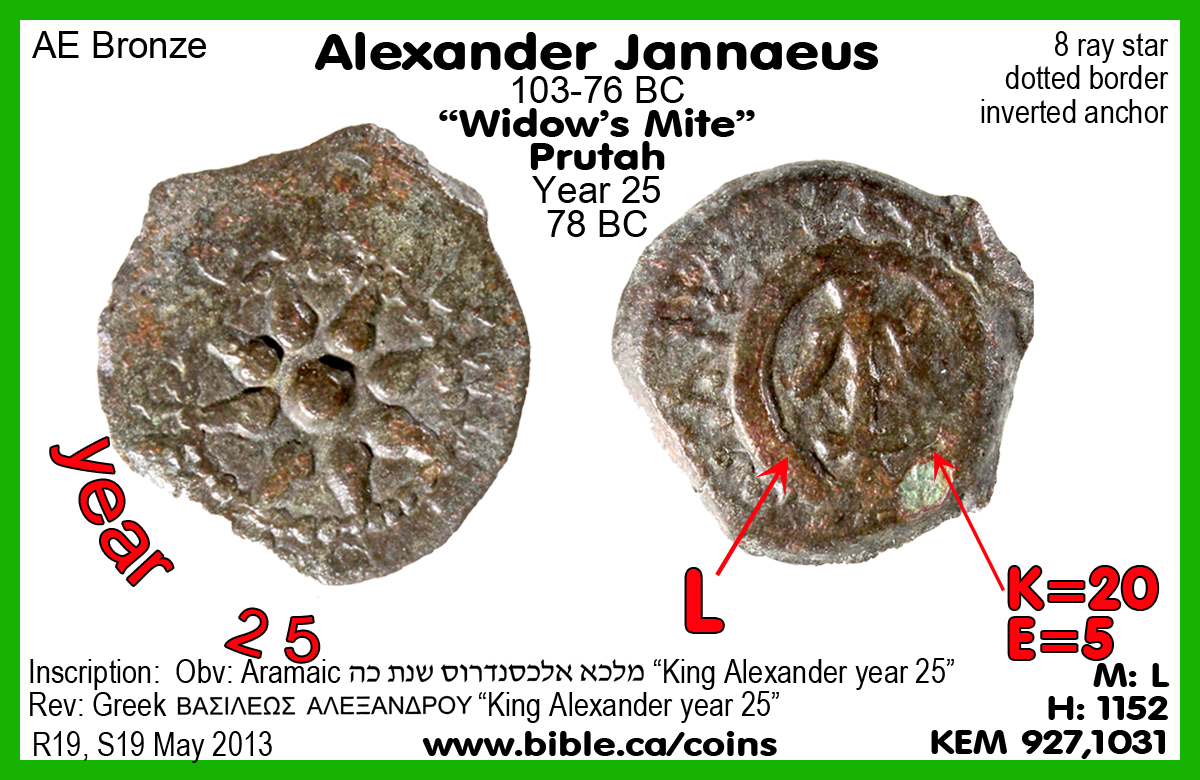
3. Hasmonean High Priest/kings projected messianic claims: Hycranus I, Jannaeus and Antigonus II
a. Several of the Hasmonean High priest kings, like Hycranus I, Jannaeus and Antigonus II edged close to outright claiming to be the messiah themselves. They may have in fact claimed to be the messiah for short periods of time like Simon bar Kokhba did in 132 AD.
b. Shortly after the brief period of true Israeli independence began (110-63 BC), Alexander Jannaeus (103-76 BC) minted the first messianic coin known as “Widow’s Mite (prutah, Meshorer L series). It featured a large star burst echoing the prophecy of Num 24:15. A special issue Widow’s Mite (Meshorer K series) spelled in extinct paleo-Hebrew the words “king AND priest” between each starburst surrounded by a kings diadem. This symbolism left no doubt that either Jannaeus was the messiah “king-priest-star” himself or that the true messiah was coming very soon. The rarity and small number of the K17 series coins found indicate Jannaeus indeed began proclaiming himself to be the messiah but it was short lived. Jannaeus was the high priest from the tribe of Levi and he would have met severe resistance because he was not the “branch of David” (tribe of Judah).
c. King-priest was
spelled in paleo-Hebrew inside the star burst to emphasise Jannaeus was the
STAR/king of messianic prophecy (Num 24:14).
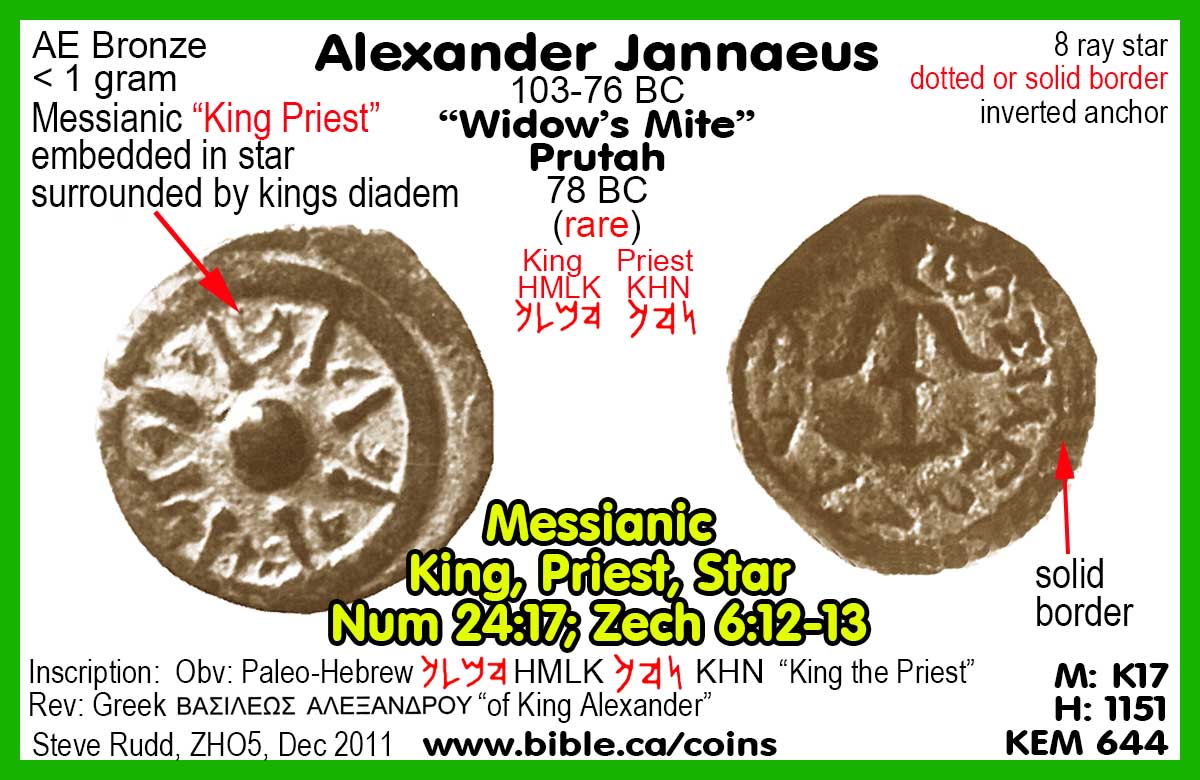
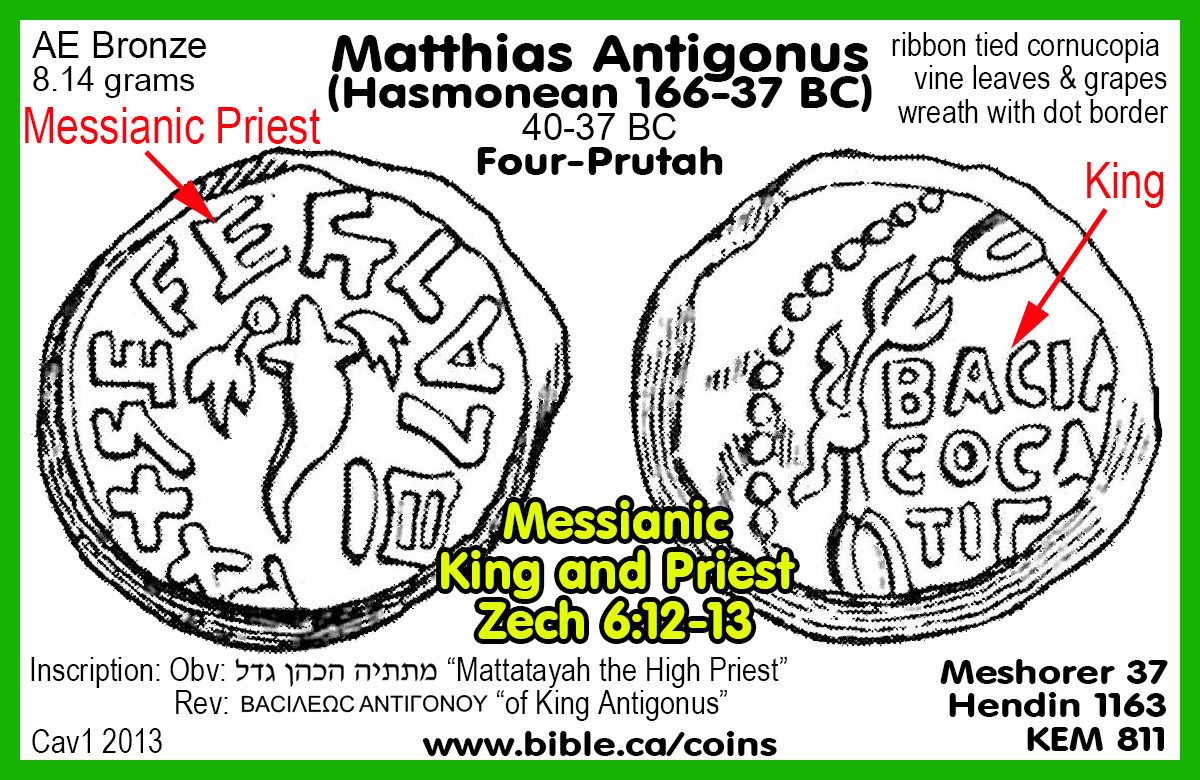
d. The Widow’s Mite coin of Jannaeus (78 BC) features the Messianic Star of Gen 24:17 and was the most common coin in circulation in the Jewish population from 78 BC down to the destruction of the Temple in 70 AD. It is the most common coin excavated by professional archeologists.
e. Antigonus II also minted one coin where he calls himself both king and priest, which may be what got him executed in 36 BC by Mark Anthony.
f. “Barag says Josephus and Rabbinic sources "leave no doubt that the Pharisees demanded that Hyrcanus I should give up the position of high priest and be content with his secular power During the reign of Alexander Jannaeus their attitude reached an extreme point—the Hasmoneans were priests and therefore not from David's line and thus usurpers of the crown.... The coins described above seem to be related to that division between the Pharisees and Hasmoneans by presenting the legend 'Priest the King.' The impact of this coin issue was, apparently, thought to be ineffective for the sake of dynastic propaganda and stopped soon after its introduction.” (Guide to biblical coins, David Hendin, coin 1151, p 200)
4. MULTIPLE MESSIAHS: The misunderstood mystery of Jesus Christ.
a. Duel Messiahs: The Jews misunderstood that all the prophecies pointed to a single messiah, Jesus Christ and were looking for MULTIPLE Messiah’s.
b. The Dead Sea Scroll 4QFlorilegium (see above) openly demonstrates the widely held view that a Star/king “branch of David” messiah would rise along with the priestly “interpreter of the Law”
c. The
Simon Bar Kokhba coin openly demonstrates the Duel Messiah concept with Simon’s
name on the front (obverse) and Eleazar the High priest (interpreter of the
law) on the reverse side. (Zuz, Denarius, Year 2, 133 AD, Hendin coin number
1384)
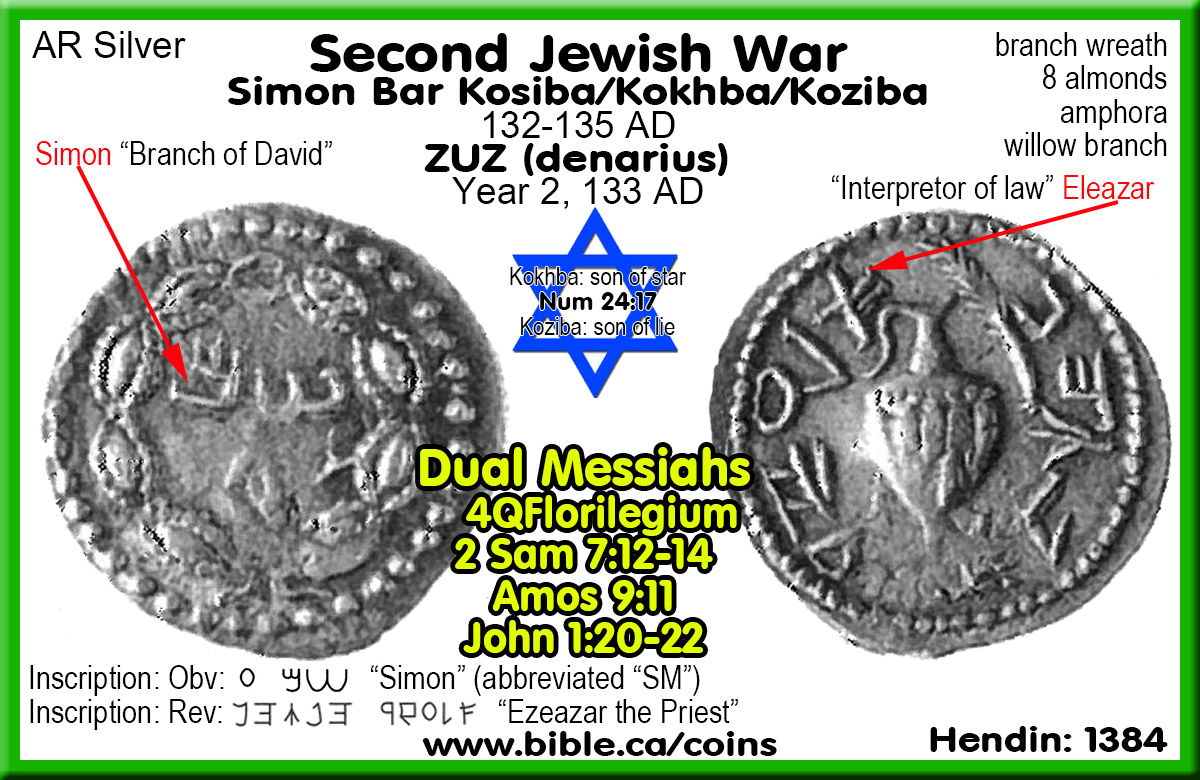
d. We see this in the interrogation of John the Baptist: "John confessed, “I am not the Christ.” They asked him, “What then? Are you Elijah?” And he said, “I am not.” “Are you the Prophet?” And he answered, “No.” Then they said to him, “Who are you, so that we may give an answer to those who sent us? What do you say about yourself?” (John 1:20-22)
e. "They asked him, and said to him, “Why then are you baptizing, if you are not the Christ, nor Elijah, nor the Prophet?”" (John 1:20-22,25).
f. Christians understand the Mystery that Jews got very wrong: All messianic prophesies were fulfilled by one person: Jesus Christ: "He made known to us the mystery of His will, according to His kind intention which He purposed in Him with a view to an administration suitable to the fullness of the times, that is, the summing up of all things in Christ, things in the heavens and things on the earth." (Ephesians 1:9-10)
5. PRINCE Isaiah 9: Coins of “Messiah Simon Bar Kokhba, Prince of Israel”. Year one coins: (132 AD) Two year one coins (Hendin 1376, 1377) have on the Obverse: “Simon Prince of Israel” and on the reverse: “Year 1 for the redemption of Israel”. One coin (Hendin 1384) has Simon’s name on the Obverse and Eleazar the [High] priest on the reverse with no other text.
a. A collection of 15 Dead Sea scrolls were found at Nahal Hever in the Cave of Letters which featured correspondence between the Jewish Messiah and his followers.
b. The key point is that he is called himself “prince/president of Israel”, the same title he put on the coin he minted.
c. “Simon bar Kosiba, President/Prince over Israel, to Yehonathan and Masabala, peace. [My order is] that you search and seize the wheat which is in the possession of Hanun” (Bar Kokhba's Letters, The Wooden Letter)
d. Simon bar Kosiba/Kokhba was the first post-70 AD
"president" of Israel who all the Jews believed “Simon son of Star”
to be the Messiah of prophecy who would liberate Israel from underneath Roman control.
After he was defeated by Hadrian, the Jews renamed him Simon "bar
Koziba" meaning "son of the lie".
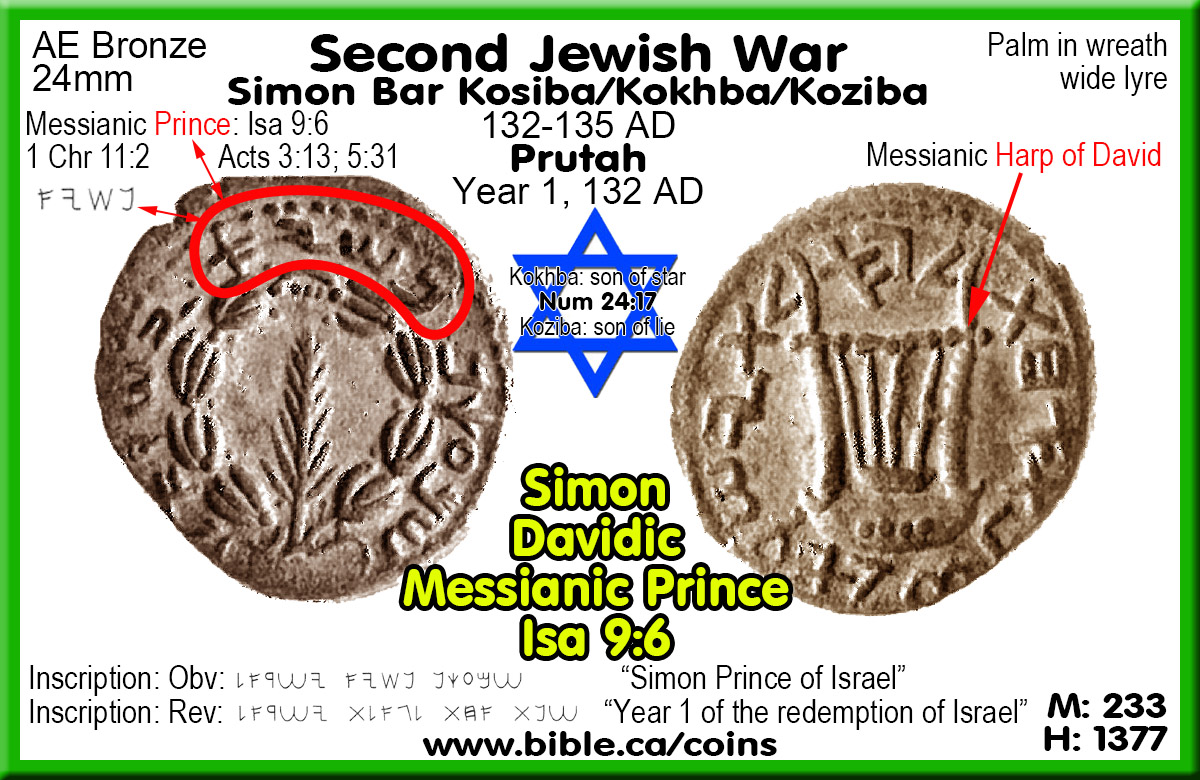
6. “As the major religious and political supporter of Bar Kokhba, it is reasonable to assume that he also was responsible for the other symbols and images on the coins, including the facade of the Temple depicted on the obverse (see Josephus, Antiq. XV.2.5). This connection is suggested by the star that appears above the architrave on some of the Bar Kokhba tetradrachms. It was R. Aqiba who regarded Simon Bar Kosibah as a messiah and applied to him the oracle of Balaam, “a star shall come forth out of Jacob” (Num 24:17). As a result the military leader of the revolt became known to his followers as Bar Kokhba (“son of the Star”). R. Aqiba was one of the very few leaders at the time of the Second Revolt who could have witnessed and remembered “the Temple of the Lord in Jerusalem,” which was destroyed in 70 C.E. There is then sufficient reason to believe that the portrayal of the Temple on the Bar Kokhba tetradrachms represents an accurate depiction of the Jerusalem sanctuary, not a “dim recollection.” (Biblical Archaeologist, Polemics and Irenics 45, Letter by Menachem Armon, Kibbutz Beeroth Yitzhak, Israel, 1982 AD)
7. See full outline on Messianic expectation seen in Dead Sea Scrolls and Jewish coins
8. Here is a summary chart of messianic symbolism seen in Jewish coins at the time of Christ and the church:
|
Messianic expectation in Jewish coins |
||
|
Bible & DSS |
Coin |
Comment |
|
Star: Num 24:17
(fulfilled in Star of Bethlehem) |
The smallest and most common coin featured a messianic star from Balaam’s prophecy. Jannaeus clearly invoked messiah-like symbolism for himself given he enjoyed independence from Rome 103-76 BC. (fulfilled in Star of Bethlehem) |
|
|
Star, Priest, King, branch temple builder: Zech 6:12-13
|
This special issue “widows Mite” features triple messianic imagery of priest-King, branch, temple restorer. “King-Priest” are spelled in long extinct Paleo-Hebrew in between the rays of the star creating a triple messianic connection with “Of King Alexander” on the flip side, implying that Jannaeus himself was the messiah. |
|
|
Priest-King Zech 6:12-13
|
While others minted a coins with either King or Priest on them, Antigonus II was the only other Hasmonean to mint a single coin with both priest and king on it. With Herod’s rebuilt of the temple in 18 BC, perhaps the Jewish temple was run down and in need of repair like in the time of Josiah. This encouraged their role as temple restorers. |
|
|
Prince: Isa 9:6 |
If the Hasmonean’s hinted quietly they were the messiah, Simon Bar Kokhba removed all doubt he was the messiah as clearly seen in his coins. In year one Simon Christ applied the “prince” of Isa 9:6 messianic prophecy to himself and indeed he ran the government and defeated Israel’s enemies (Rome) for three years. “Simon bar Kosiba, President/Prince over Israel, to Yehonathan and Masabala, peace. [My order is] that you search and seize the wheat which is in the possession of Hanun” (Bar Kokhba's Letters, The Wooden Letter) |
|
|
Restored temple: Amos 9:11; 2 Sam 7:14 |
With Simon’s successes in year one, his “year two of freedom of Israel” coins with the messianic star above the restored Jerusalem temple represent the peak of his power. He was now boldly claiming to be the Messiah of prophecy and a large majority of the Jews believed his claim that the “Days of the Messiah” had begun! |
|
|
Simon the Christ “Son of the Star” became “son of the Lie” after his defeat. |
This year three coin has “Simon” on the obverse and “for the freedom of Jerusalem” on the reverse. The substitution of freedom of “Israel” for “Jerusalem” focused the need to restore the Temple destroyed in 70 AD. Simon, known as “son of the Star” was called “son of the Lie” after a massive slaughter in 135 AD by Hadrian who erected a temple of Jupiter on the temple mount. |
|
|
Messianic Harp of David |
It is universally accepted that Simon Bar Kokhba claimed to be the messiah, branch of David. Hendin 1389, 1424, 1429 are very similar with Simon on obverse and three string harp/lyre of David on reverse. |
|
|
Messianic Harp of David |
This coin has Simon’s name AROUND the Davidic harp is a bold announcement the messianic branch/son of David who fulfills prophecies. Hendin 1436 |
|
|
Dual Messiahs John 1:20-22
2 Sam 7:12-14; Amos 9:11 |
TWO MESSIAHS: Dead Sea scroll 4QFlorilegium documents they also thought the messiah was two different men: “This refers to the branch of David, who will arise with the Interpreter of the law who will rise up in Zion in the last days” (4QFlorilegium, explaining 2 Sam 7 & Amos 9:11). This false idea of twin messiahs is also seen in John 1:20-22. The Jews at the time of Jesus Christ misunderstood much of what the Messianic prophecy was really predicting. They never dreamed the land promise was heaven, the restored temple was the body of Christ, the kingdom was the church and that the messiah was the liberator over the devil not Rome. They were looking for two messiahs when only Jesus was predicted. |
|
VII. List of Jewish false messiahs:
1. Hasmonean messianic claims seen through their coins:
a. Alexander Jannaeus (103-76 BC) minted coins with messianic claims for themselves, like the famous “messianic star” widow’s mite echoing Number 24:17. He also minted the king/priest coin (Zech 6:12)
b. Antigonus II (40-37 BC) minted a king/priest coin echoing Zech 6:12
2. “For some time ago Theudas rose up (<2 BC?), claiming to be somebody, and a group of about four hundred men joined up with him. But he was killed, and all who followed him were dispersed and came to nothing. “After this man, Judas of Galilee rose up in the days of the census (1 BC) and drew away some people after him; he too perished, and all those who followed him were scattered." (Acts 5:36–37)
a. Theudas <2 BC: is an unknown man which Josephus doesn’t mention.
b. Judas the Galilean 2 BC - 6 AD: founder of the zealot movement:
i. Judas the Galilean 2 BC “the sons of Judas of Galilee were now slain; I mean of that Judas who caused the people to revolt, when Cyrenius came to take an account of the estates of the Jews, as we have shown in a foregoing book. The names of those sons were James and Simon, whom Alexander commanded to be crucified; (103) but now Herod, king of Chalcis, removed Joseph, the son of Camydus, from the high priesthood, and made Ananias, the son of Nebedeus, his successor; and now it was that Cumanus came as successor to Tiberius Alexander” (Josephus Antiquities 20.102–103)
ii. Judas the Galilean 6-9 AD: “And now Archelaus’s part of Judea was reduced into a province, and Coponious (6-9 AD), one of the equestrian order among the Romans, was sent as a procurator, having the power of [life and] death put into his hands by Caesar. (118) Under his administration it was that a certain Galilean, whose name was Judas, prevailed with his countrymen to revolt; and said they were cowards if they would endure to pay a tax to the Romans, and would, after God, submit to mortal men as their lords. This man was a teacher of a peculiar sect of his own, and was not at all like the rest of those their leaders.” (Josephus Wars 2.117–118)
iii. Judas the Galilean 2 BC - 6 AD: “Yet there was one Judas, a Gaulonite, of a city whose name was Gamala, who, taking with him Sadduc, a Pharisee, became zealous to draw them to a revolt, who both said that this taxation was no better than an introduction to slavery, and exhorted the nation to assert their liberty: (5) as if they could procure them happiness and security for what they possessed, and an assured enjoyment of a still greater good, which was that of the honor and glory they would thereby acquire for magnanimity. They also said that God would not otherwise be assisting to them, than upon their joining with one another in such counsels as might be successful, and for their own advantage; and this especially, if they would set about great exploits, and not grow weary in executing the same; (6) so men received what they said with pleasure, and this bold attempt proceeded to a great height. All sorts of misfortunes also sprang from these men, and the nation was infected with this doctrine to an incredible degree; (7) one violent war came upon us after another, and we lost our friends, who used to alleviate our pains; there were also very great robberies and murders of our principal men. This was done in pretense indeed for the public welfare, but in reality for the hopes of gain to themselves; (8) whence arose seditions, and from them murders of men, which sometimes fell on those of their own people (by the madness of these men towards one another, while their desire was that none of the adverse party might be left), and sometimes on their enemies; a famine also coming upon us, reduced us to the last degree of despair, as did also the taking and demolishing of cities; nay, the sedition at last increased so high, that the very temple of God was burnt down by their enemy’s fire. (9) Such were the consequences of this, that the customs of our fathers were altered and such a change was made, as added a mighty weight toward bringing all to destruction, which these men occasioned by thus conspiring together; for Judas and Sadduc, who excited a fourth philosophic sect among us, and had a great many followers therein, filled our civil government with tumults at present, and laid the foundation of our future miseries, by this system of philosophy, which we were before unacquainted withal; (10) concerning which I shall discourse a little, and this the rather, because the infection which spread thence among the younger sort, who were zealous for it, brought the public to destruction.” (Josephus Antiquities 18.4–10)
3. Theudas the Magician who parted the Jordan river in 44-46 AD:
a. This is not the same Theudas mentioned by Gamaliel in Acts 5.
b. “Now it came to pass, while Fadus was procurator of Judea, that a certain magician, whose name was Theudas, persuaded a great part of the people to take their effects with them, and follow him to the river Jordan; for he told them he was a prophet, and that he would, by his own command, divide the river, and afford them an easy passage over it; (98) and many were deluded by his words. However, Fadus did not permit them to make any advantage of his wild attempt, but sent a troop of horsemen out against them; who, falling upon them unexpectedly, slew many of them and took many of them alive. They also took Theudas alive, and cut off his head, and carried it to Jerusalem. This was what befell the Jews in the time of Cuspius Fadus’s government.” (Josephus Antiquities 20.97–99)
4. Simon Bar Kokhba in 132-125 AD:
a. The messianic claims of Simon are well documented.
b. Before his defeat he was called “Son of the Star” echoing the messianic prophecy of Num 24:17
c. After his defeat the Jews realized he was not the messiah and renamed him “son of the lie”
5. Muhammad in 629 AD:
a. Three ancient authentic sources (7th century, one 8th) that show that the significant portion of the Jewish community initially viewed Muhammad as the messiah, just as they did Bar Kokhba in 135 AD.
b. In 629 AD: "Muhammad, leader of the Arabs. In this year died Muhammad, the leader and false prophet of the Saracens, after appointing his kinsman Abu Bakr to his chieftainship. At the same time, his repute spread abroad and everyone was frightened. At the beginning of his advent the misguided Jews thought he was the Messiah who is awaited by them, so that some of their leaders joined him and accepted his religion while forsaking that of Moses, who saw God. Those who did so were ten in number, and they remained with him until his murder. But when they saw him eating camel meat, they realized that he was not the one they thought him to be, and were at a loss what to do; being afraid to abjure his religion, those wretched men taught him illicit things directed against us, Christians, and remained with him. … Whenever he came to Palestine he consorted with Jews and Christians and sought from them certain scriptural matters. He was also afflicted with epilepsy. (The Chronicle of Theophanes Confessor 813 AD, Byzantine history 284-813 AD, Cyril Mango, Roger Scott, Michael Maas, Chronicle year 629 AD, 1997 AD)
c. With the rise of “Muhammad the Ishmaelite” in 610 AD, as Christians first called him, those Jews in the local vicinity Mecca/Medina believed Muhammad to be their Messiah. Both the corrupted Masoretic Chronology and the Seder Olam qualified Muhammad to be the Messiah. While the chronicle says only 10 men followed Muhammad as the Messiah, it is important to realize that if other Jews had witnessed the same events, they might have jointed them in believing as well. The Septuagint Chronology, however had the end of the world in 440 AD which would have proven that Muhammad could not be the Messiah.
VIII. Messianic expectation of the Samaritans and Samaritan false messiahs:
A. Messianic expectation of the Samaritans at the time of Christ
1. Messianic passages in the Torah:
a. "And I will put enmity Between you and the woman, And between your seed and her seed; He shall bruise you on the head, And you shall bruise him on the heel.”" (Genesis 3:15)
b. "I see him, but not now; I behold him, but not near; A star shall come forth from Jacob, A scepter shall rise from Israel, And shall crush through the forehead of Moab, And tear down all the sons of Sheth." (Numbers 24:17)
c. "‘I will raise up a prophet from among their countrymen like you, and I will put My words in his mouth, and he shall speak to them all that I command him. ‘It shall come about that whoever will not listen to My words which he shall speak in My name, I Myself will require it of him." (Deuteronomy 18:18–19)
2. The woman at the well of Jacob in Shechem (Nablus)
a. "The woman said to Him, “I know that Messiah is coming (He who is called Christ); when that One comes, He will declare all things to us.” Jesus said to her, “I who speak to you am He.”" (John 4:25–26)
b. "“Come, see a man who told me all the things that I have done; this is not the Christ, is it?”" (John 4:29)
c. "and they were saying to the woman, “It is no longer because of what you said that we believe, for we have heard for ourselves and know that this One is indeed the Savior of the world.”" (John 4:42)
B. List of Samaritan False Messiahs:
1. Dositheus the Samaritan 30 AD:
a. “After having thus examined our Document in its entirety, we can only arrive at the one conclusion that the messianic pronunciamento and the constitution we have before us in fragmentary form emanated from the immediate followers of Dositheus, the Samaritan heresiarch, who claimed to be the Messiah from the Samaritan line of the Zadokite priesthood and was declared to be “the only teacher of righteousness” (Zedek), as he wanted to have the law restored in full conformity with the view and tradition of the Zadokite priesthood. While in accord with the Samaritan views in the main, he differs from them particularly in regard to the prophetic books, which he recognizes as more or less inspired, rejecting merely the Judaic hopes founded on the Davidic dynasty, while at the same time he makes ample use of the pseudepigraphic literature that seems then to have been widely read, but was lost sight of thereafter in the rabbinic schools.” (The American Journal of Theology, Volume XV, Nos. 1–4, p 431, 1911 AD)
b. “DOSITHEUS, dō-sith′e-ʊs*, THE SAMARITAN: A false Messiah among the Samaritans, and founder of a religious sect. Very little is known of him; and the uncertainty of the reports is increased by his being confounded with an older Dositheus, the teacher of Zadok, who founded the sect of the Sadducees. He was probably a contemporary of Jesus, or perhaps a little later. In those days of great religious excitement he presented himself to the Samaritans as the prophet promised in Deut. 18:18 (which passage, according to Samaritan doctrine, is the only true Messianic prophecy ever given) and as the Son of God” (The New Schaff-Herzog Encyclopedia, Volume 3, Page 495, 1914 AD)
c. “Origen (ca. 185–ca. 254), dating Dositheus the Samaritan in the time of the apostles and of Simon Magus, writes that the Dositheans are named after him. Like Simon the Magician, Dositheus performed magic and considered himself either the “Son of God” or the “Christ prophesied by Moses.” The latter may be a reference to Deut. 18:15” (The Samaritans: A Profile, R. Pummer, p 125, 2016 AD)
d. “Of which heretics I will (to pass by a good deal) summarize some few particulars. For of Judaism’s heretics I am silent—Dositheus the Samaritan, I mean, who was the first who had the hardihood to repudiate the prophets, on the ground that they had not spoken under inspiration of the Holy Spirit.” (Tertullian, Adv. omn. haer. 1, 200 AD)
e. “Nay, he who carefully considers (the famous injunction relating to) the Sabbath, “Ye shall sit each one in your dwellings: let no one go out from his place on the seventh day,” will deem it impossible to be literally observed: for no living being is able to sit throughout a whole day, and remain without moving from a sitting position. And therefore those who belong to the circumcision, and all who desire that no meaning should be exhibited, save the literal one, do not investigate at all such subjects as those of the goat-stag and griffin and vulture, but indulge in foolish talk on certain points, multiplying words and adducing tasteless12 traditions; as, for example, with regard to the Sabbath, saying that two thousand cubits is each one’s limit. Others, again, among whom is Dositheus the Samaritan, condemning such an interpretation, think that in the position in which a man is found on the Sabbath-day, he is to remain until evening. Moreover, the not carrying of a burden on the Sabbath-day is an impossibility; and therefore the Jewish teachers have fallen into countless absurdities, saying that a shoe of such a kind was a burden, but not one of another kind; and that a sandal which had nails was a burden, but not one that was without them; and in like manner what was borne on one shoulder (was a load), but not that which was carried on both.” (Origen, De princ. 4.1.17, 200 AD)
2. “Simon Magus” the sorcerer of Acts 8:
a. "Philip went down to the city of Samaria [likely Nablus, not Sebastes which was pagan Gentile not Samaritan] and began proclaiming Christ to them. ... Now there was a man named Simon, who formerly was practicing magic in the city and astonishing the people of Samaria, claiming to be someone great [Magnus]; and they all, from smallest to greatest, were giving attention to him, saying, “This man is what is called the Great Power of God.” And they were giving him attention because he had for a long time astonished them with his magic arts." (Acts 8:5–11)
3. Unnamed False Messiah in 36 AD
a. The timing is the same time of the great persecution and scattering of Acts 8:1-4
b. This man lived in the same place and time of Simon the Sorcerer of Acts 8
c. A man rises and speaks lies to the Samaritans, claiming to be “the coming one”, a prophet and will show them the original sacred vessels of Moses.
d. Unnamed Samaritan messiah 36 AD: “But the nation of the Samaritans did not escape without tumults. The man [false messiah] who excited them to it, was one who thought lying a thing of little consequence [spoke lies], and who contrived everything so, that the multitude might be pleased [attracted a great following]; so he bade them get together upon Mount Gerizzim, which is by them looked upon as the most holy of all mountains, and assured them that, when they were come thither, he would show them those sacred vessels which were laid under that place, because Moses put them there. (86) So they came thither armed, and thought the discourse of the man probable; and as they abode at a certain village, which was called Tirathaba, they got the rest together to them, and desired to go up the mountain in a great multitude together. (87) But Pilate prevented their going up, by seizing upon the roads with a great band of horsemen and footmen, who fell upon those that were gotten together in the village; and when they came to an action, some of them they slew, and others of them they put to flight, and took a great many alive, the principal of whom, and also the most potent of those that fled away, Pilate ordered to be slain. 2. (88) But when this tumult was appeased, the Samaritan senate sent an embassy to Vitellius, a man that had been consul, and who was now president of Syria, and accused Pilate of the murder of those that were killed; for that they did not go to Tirathaba in order to revolt from the Romans, but to escape the violence of Pilate. (89) So Vitellius sent Marcellus, a friend of his, to take care of the affairs of Judea, and ordered Pilate to go to Rome, to answer before the emperor to the accusation of the Jews. So Pilate, when he had tarried ten years in Judea, made haste to Rome, and this in obedience to the orders of Vitellius, which he durst not contradict; but before he could get to Rome, Tiberius was dead.” (Josephus, Antiquities 18.84-89, 36 AD)
|
The Septuagint LXX “Scripture Cannot Be Broken” |
|||||
|
Start Here: Master Introduction and Index |
|||||
|
Six Bible Manuscripts |
|||||
|
1446 BC Sinai Text (ST) |
1050 BC Samuel’s Text (SNT) |
623 BC Samaritan (SP) |
458 BC Ezra’s Text (XIV) |
282 BC Septuagint (LXX) |
160 AD Masoretic (MT) |
|
Research Tools |
|||||
|
Steve Rudd, November 2017 AD: Contact the author for comments, input or corrections |
|||||
By Steve Rudd: November 2017: Contact the author for comments, input or corrections.
Go to: Main Bible Manuscripts Page
